
Giving it your all today, Doing it all again tomorrow.
Natural resources sometimes need financial resources. That’s why since 1916, Alabama Ag Credit has helped farming families purchase property, replant after a harvest, manage their agribusiness, and refinance property. With the financial support for everything from combines and tractors, to general business operations, we can o er you customized long-term and short-term credit options. Call us today to learn about our competitive rates and how our relationship lending can help


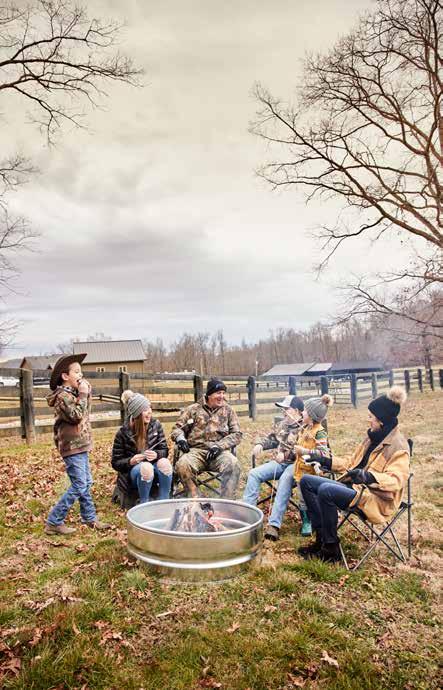
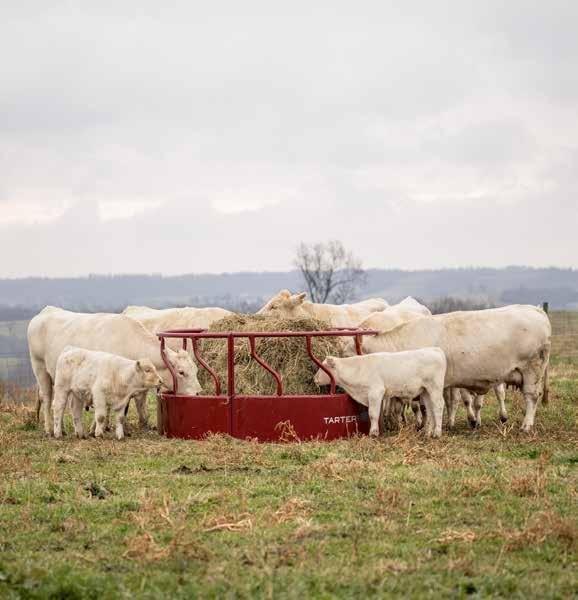

2 Cooperative Farming News
n
’ t get it, but we do.
T A R TE R U S A CO M | 1. 800 .3 4 6. 448 6
TITAN BULL HAY FEEDER
4 FT. OVAL RAISED BED PLANTER
CO-OP MATTERS
22 Co-op Corner: Ryan Jenkins
26 AFC Service Awards
LIFE ON THE HOMEPLACE AND IN THE COMMUNITY
50 Farm to School:
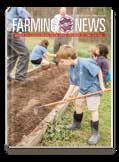

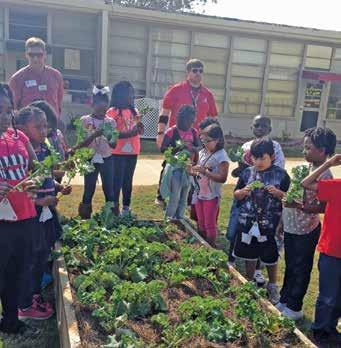
Alabama Farmers Bringing Food to the Table


54 Cuzz's Travel Depot

YOUTH MATTERS
30 FFA Sentinel: West Morgan High School

FFA Chapter
32 4-H Extension Corner: The Chance to Try Something New Alabama Institute for the Blind and Deaf
35 PALS: Environmental Day
October / November 2023 3
REGULARS Letter from the Editor ....................... 4 Ag Insight .......................................... Business of Farming .......................... Feeding Facts .................................... From the State Vet’s Office................
the Point ............................... Horse Sense from Purina................... Sweet Grown Alabama Outdoor Logic with BioLogic ............ Cooking with Stacy Lyn .....................
Your Forest .......................... Shepherding Outdoors ......................
Your Garden? ......................... Howle’s Hints.................................... Magic of Gardening ........................... Lawn & Garden Checklist ................. Simple Times ..................................... 68 Food Safety ........................................ 72 Grazing Grace .................................... 74 The Co-op Pantry .............................. 78 What’s Happening in Alabama 82 www.alafarm.com CONTENTS On the Cover: Children at Montessori School at Hampstead enjoy hands-on learning about agriculture in a raised bed garden at Hampstead Farm. (Photo taken in 2018) 64 22 54 36 50 30
What’s
Farming
How’s
er from the Editor
For the folks tired of sweating in the Summer heat, the wait for cooler temperatures is over! Autumn is here at last and although the days are ge ing shorter and temperatures are dropping, the hard work continues for farmers as they begin harvest season.
October also marks Beef Month in Alabama. My daddy recently got into the ca le business, and it has given me a new understanding of hard work. I’ve always enjoyed eating beef, but I now know that ca le producers literally put their blood, sweat and tears into providing quality beef for everyone to enjoy.
is issue features Alabama’s Farm to School program which connects farm fresh food to the cafeteria table. Check out our Co-op Corner to meet a Florida man who is known for always pushing himself to be be er…and on social media for growing actual peanut M&Ms. We also have tips on how to get Whitetails closer than ever before.


We are thankful for our regulars, too. ey give important insight and updates on the Ag business, show us that taking a chance can be fun and educational for students and that a bountiful fall harvest is just as good as a spring one.

ere are exciting changes to come for Cooperative Farming News in 2024, but we look forward to bringing you Down to Earth news that is be er than ever.

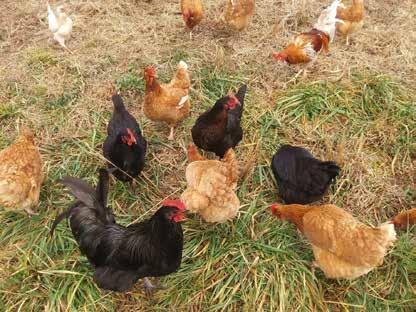
As always, thank you for being a loyal reader, customer and part of the AFC family.

Lester Editor-in-Chief
4 Cooperative Farming News
Tiffany
Le
Dear valued readers of Cooperative Farming News,


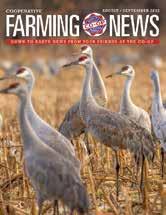


We are dedicated to delivering top-notch content and are excited to share changes to take your reading experience a whole new level! Beginning January 2024, we are transitioning to a quarterly magazine schedule, ensuring you get a more robust publication that you won't be able to put down. Plus, we're not stopping there – we're bringing more digital content your way, so you can stay connected with us anytime, anywhere.
Inside our quarterly magazine, you’ll find captivating new articles that shine a spotlight on local quality Co-op farmers and patrons and their inspiring stories. You’ll witness the incredible work ethic of Alabama Farmers and how the Co-op plays a pivotal role in their success. And that’s not all – we have partnered with our friends at Faithway Alliance to bring you a fresh new column full of insightful perspectives.
We want to express our heartfelt gratitude for your loyal readership of Cooperative Farming News. Your support means the world to us and it is what drives us to keep you connected with the vibrant agricultural community. We truly appreciate your continued support. Stick around – we've got great things ahead!
October / November 2023
COOPERATIVE FARMING NEWS 2024
Editor-in-Chief: Ti any Lester
Contributing Editor: Jade Randolph
Advertising, Editorial, Subscription and Publication O ces
121 Somerville Road NE Decatur, AL 35601-2659
P.O. Box 2227 Decatur, AL 35609-2227
256-308-1618
AFC O cers
Rivers Myres, President Ben Haynes, Chairman of the Board
AFC Board of Directors
Je Sims - Vice Chairman Rickey Cornu , Ma Haney, Brooks Hayes, Rick Hendricks, Steve Stroud, Mike Tate and David Womack Honorary Directors: Sam Givhan, Bill Sanders and Lawrence Smith
Subscription $10 per year
For subscription inquiries or change of address: P.O. Box 2227, Decatur, AL 35609-2227 or call 256-308-1618
Subscribe online at h ps://www.alafarm.com/magazine

To advertise:
Wendy McFarland 334-652-9080 or email McFarlandAdVantage@gmail.com
Cooperative Farming News is published bi-monthly by Alabama Farmers Cooperative, Inc.

121 Somerville Road NE, Decatur, AL 35601-2659
P.O. Box 2227, Decatur, AL 35609-2227
Reproduction in whole or in part without wri en permission is strictly prohibited. e publisher reserves the right to refuse any advertising and will not be responsible for copy errors or misprints in advertising or editorial material, other than to publish corrections of errors in fact. Feature articles, news items and columns are published for the information of our readers from quali ed, reputable sources; however, the editors and publisher make no guarantees and assume no liability for any reader’s decision to implement any procedure, recommendation or advice printed in this publication. Photos are credited to author unless otherwise noted. Advertised sale items may not be stocked by every Quality Co-op store and prices may vary.
www.alafarm.com
Postmaster:
Please send notice of address change (enclosing latest address label) to publication
o ce: Cooperative Farming News
P.O. Box 2227 Decatur, AL 35609-2227

6 Cooperative Farming News
Visit our website to subscribe to our magazine or read Online. You can also purchase all of your Co-op swag and your own copy of e Co-op Kitchen Cookbook! h ps://www.alafarm.com/p/getconnected www.alafarm.com/magazine FOLLOW US: @Alafarm_coop /Alafarm
Altha Farmers Cooperative
Blountstown, FL - James Lynn, Gen. Mgr.
Phone 850-674-8194
Andalusia Farmers Cooperative
Andalusia - Russell Lassiter, Gen. Mgr.
Phone 334-222-1851
Florala - Pete Blackwell, Mgr.
Phone 334-858-6142
Opp - Brandon Bledsoe, Mgr.
Phone 334-493-7715
Atmore Farmers Cooperative
Atmore - Todd Booker, Gen. Mgr.
Phone 251-368-2191
Blount County Farmers Cooperative
Oneonta - Eric Sanders, Gen. Mgr.
Phone 205-274-2185
Central Alabama Farmers Cooperative
Tim Wood, Gen. Mgr.
Demopolis - Tom Eunice, Mgr.
Phone 334-289-0155
Faunsdale - Bryan Monk, Mgr.
Phone 334-628-2681
Selma - omas Reeves, Mgr.
Phone 334-874-9083
Cherokee Farmers Cooperative
Centre - Seth Eubanks, Gen. Mgr.
Phone 256-927-313
Jacksonville - Tommy omas, Mgr.
Phone 256-435-3430
Piedmont - Kevin Bobbi , Mgr. Phone 256-447-6560
Clay County Exchange
Lineville - Je Kinder, Gen. Mgr. Phone 256-396-2097
Colbert Farmers Cooperative
Daniel Waldrep, Gen. Mgr.
Leighton - Brad Balentine, Mgr.
Phone 256-446-8328
Tuscumbia - Chuck Hellums, Mgr.
Phone 256-383-6462
Dekalb Farmers Cooperative
Jason Plunke , Gen. Mgr.
Albertville - Brad Childress
Phone 256-878-3261
Crossville - David Tierce, Mgr.
Phone 256-528-7188
Rainsville - Cody Etherton, Mgr.
Phone 256-638-2569
Elberta Farmers Cooperative
Elberta - Justin Brown, Gen. Mgr.
Phone 251-986-8103
Farmers Co-op Of Ashford
Ashford - Timothy Tolar, Gen. Mgr.
Phone 334-899-3263
Farmers Cooperative Market
Doug Smith, Gen. Mgr.
Frisco City - Tim Goldman, Mgr. Phone 251-267-3175
Fertilizer
Phone 251-267-3173
Leroy - Je Hughston, Mgr. Phone 251-246-3512
Farmers Cooperative, Inc.
Barry Long, Gen. Mgr.
Live Oak, FL - Judd Chancey, Ag Div. Mgr. Phone 386-362-1459
Madison, FL - Virginia Kurtz Phone 850-973-2269
Genco Farmers Cooperative
Enterprise - Ricky Wilks, Gen. Mgr. Phone 334-347-9007
Elba - Colin Morris, Mgr. Phone 334-897-6972
Hartford - Todd Smith, Mgr. Phone 334-588-2992
West Geneva - Robert Pi man, Mgr. Phone 334-898-7932
Headland Peanut Warehouse Co-op
Headland - Chris Hix, Gen Mgr. Phone 334-693-3313
Jay Peanut Farmers Cooperative
Jay, FL - Ryan Williams, Gen. Mgr. Phone 850-675-4597
Luverne Cooperative Services
Luverne - Perry Catre , Gen. Mgr. Phone 334-335-5082
Madison County Cooperative
Hazel Green - Keith Gri n, Gen. Mgr.
Phone 256-828-2010
Meridianville - Ma Dunbar, Mgr.
Phone 256-828-5360
New Market - Ben Smith, Mgr.
Phone 256-379-2553
Sco sboro - Ramsey Prince, Mgr. Phone 256-574-1688
Marion County Cooperative
Hamilton - Steve Lann, Gen. Mgr.
Phone 205-921-2631
Faye e - Kellie Trull, Mgr.
Phone 205-932-5901
Haleyville - Jessica Steward, Mgr.
Phone 205-486-3794
Marshall Farmers Cooperative
Holly Pond - Brian Keith, Gen. Mgr.
Phone 256-796-5337
Arab - Mark Upton, Mgr. Phone 256-586-5515
Morgan Farmers Cooperative
Bradley Hopkins, Gen. Mgr.
Hartselle - Jason Pealor, Mgr. Phone 256-773-6832
Pike County Cooperative
Goshen - Danny Dewrell, Gen. Mgr. Phone 334-484-3441
Troy - Je Baron, Mgr. Phone 334-566-1834
Quality Cooperative, Inc.
Greenville - Daniel Salter, Gen. Mgr. Phone 334-382-6548
Taleecon Farmers Cooperative
Notasulga - Sco Hartley, Gen. Mgr. Phone 334-257-3930
Wetumpka - Timothy Richardson, Mgr. Phone 334-567-4321
Talladega County Exchange
Talladega - Chris Ellio , Gen. Mgr. Phone 256-362-2716
Ashville - Bridge e Barne , Mgr. Phone 205-594-7042
Columbiana - Barry Keller, Mgr. Phone 205-669-7082
Pell City - Joseph Taylor, Mgr. Phone 205-338-2821
Randolph - Tim Brown, Mgr. Phone 256-357-4743
Tennessee Valley Cooperative, LLC
John Curtis, President
Athens – Bri Christopher, Mgr. Phone 256-232-5500
Courtland - John Holley Phone 256-637-2939
Elgin - Je Hendrix, Mgr. Phone 256-247-3453
Florence - Reggie Shook, Vice Pres. Robbie Neal, Mgr. Phone 256-764-8441
Grassy - Greg McCannon, Mgr. Phone 256-229-6664
Lynnville, TN - Kyle Dogge , Mgr. Phone 931-527-3923
Moulton - John Holley, Vice Pres. Phone 256-974-9213
Pulaski, TN - Je Wales, Mgr. Phone 931-363-2563
Tuscaloosa Farmers Cooperative
Wayne Gilliam, Gen. Mgr.
Northport - Cole Gilliam, Mgr. Phone 205-339-8181
Walker Farmers Cooperative
Jasper - Cody King, Gen. Mgr. Phone 205-387-1142
*Please contact each store directly for all of the services they o er*
October / November 2023 7
DIRECTORY OF MEMBER COOPERATIVES PEANUTS PECANS PROPANE PEA SHELLING CATFISH
AG INSIGHT
BY JIM ERICKSON
USDA program launched for those who faced lending discrimination

The U.S. Department of Agriculture (USDA) has announced the opening of the financial assistance application process for eligible farmers, ranchers, and forest landowners who experienced discrimination in USDA farm lending programs prior to January 2021.
Section 22007 of the Inflation Reduction Act (IRA) directs USDA to provide this assistance. Since the law’s passage, USDA has worked to design the program in accordance with significant stakeholder input.
“The opening of the application process is an important step in delivering on our commitment of providing financial assistance to those who faced discrimination in USDA farm lending, as swiftly and efficiently as possible,” said Agriculture Secretary Tom Vilsack.
“USDA will continue to work with our national vendor partners and community-based organizations to make sure eligible farmers, ranchers, and forest land-
owners have clear information about what is available to them, how to apply, and where to obtain assistance with their questions at each step of the way.”
The program website, 22007apply.gov, is now open. The website includes an English- and Spanish-language application that applicants can download or submit via an e-filing portal, information on how to obtain technical assistance in-person or virtually, and additional resources and details about the program.
Farmers, ranchers, and forest landowners who experienced discrimination by USDA in its farm loan programs prior to January 1, 2021 and/or are currently debtors with assigned or assumed USDA farm loan
– Agriculture Secretary Tom Vilsack

8 Cooperative Farming News
AG INSIGHT
“USDA will continue to work with our national vendor partners and community-based organizations to make sure eligible farmers, ranchers, and forest landowners have clear information about what is available to them, how to apply, and where to obtain assistance with their questions at each step of the way.”
debt that was the subject of USDA discrimination that occurred prior to January 1, 2021, are eligible for this program.
To apply, borrowers have the option to apply via the e-filing portal at 22007apply.gov or submit paper-based forms via mail or in-person delivery to the program’s local offices. The application process will be open through October 31, 2023. Under the planned timeline, applications will be reviewed in November and December, with payments reaching recipients soon thereafter. Applicants also should know that the application process is not on a first come, first served, basis. All applications received or postmarked before the October 31 deadline will be considered.
Universities, USDA agency seek energy synergies

Renewable energy production is growing in the United States, but expanding an energy system built on renewables – like solar or wind – means locating infrastructure closer to where those resources are either abundant and/or easily distributed. Accordingly,
research supported by the National Institute of Food and Agriculture (NIFA) is developing options where solar energy production and agriculture are partners rather than competitors for land.
Led by the University of Illinois Urbana-Champaign, the Sustainably Co-locating Agricultural and Photovoltaic Electricity Systems (SCAPES) project is researching agrivoltaic systems – fields with both crops and solar panels – in a variety of land and climate types.
Additionally, the project features a combination of research, education and Extension activities at the University of Arizona, Colorado State University, Auburn University, the University of Illinois Chicago and the National Renewable Energy Laboratory.
Co-locating photovoltaic systems within productive pasture and crop land -- aptly named agrivoltaic systems -- not only provides potential economic benefit but could go a long way toward mitigating barriers to acceptance of photovoltaics for agriculture, as this synergy is a sustainable solution that does not compete for land.
Supported by NIFA’s Sustainable Agriculture Systems program, the project brings together people from multiple disciplines to take a complete look at the different dimensions of moving towards the use of more agrivoltaics in the United States.
The SCAPES project is working to provide a comprehensive analysis of the potential of agrivoltaics. Its goal is to maintain or increase crop yield; increase the combined (food and electricity) productivity of land; and diversify and increase farm profitability with diverse crops (row crops, forage and specialty crops) across three biophysically diverse regions in the U.S.: rainfed Illinois, dryland Colorado and irrigated Arizona.
SCAPES couples field experiments across three states with farm-scale economic analysis, farmer survey and a system modeling approach to extrapolate not only production outcomes but economic outcomes as well.
The project’s economic and Extension teams also are examining strategies to overcome adoption barriers for the new technology.
Germplasm program shows value of broadening genetic diversity
Animal genetics plays a crucial role in modern agriculture, enhancing food sustainability and animal adaptation to a changing climate. Over the years,
October / November 2023 9
animal breeders have underlined the significance of genetics in enhancing animal productivity.
Preserving diverse sources of animal germplasm is crucial to maintaining genetic diversity, which provides economic sustainability and food security in the face of new diseases and climate change, and advances our knowledge of animal genetics and genomics.

The USDA Agricultural Research Service's National Animal Germplasm Program (NAGP) has collected and preserved more than one million samples from over 64,000 animals across the United States. These samples, dating from the late 1940s to the present, aim to maintain the genetic diversity of American livestock, providing genetic security and an improved understanding of genes that influence and control valuable animal characteristics.
Although large breeds of dairy and beef cattle, like Holstein and Angus, are believed to have no diversity issues, recent research has uncovered the opposite, especially with the lack of variation of the Y chromosome in Holstein bulls.


Studies involving both Angus and Holstein breeds illustrate the value of the germplasm collection to broaden, and even rescue, genetic diversity, improve
animal performance, and suggest to scientists that there is still significant study to be done in understanding the genetic basis for livestock performance."
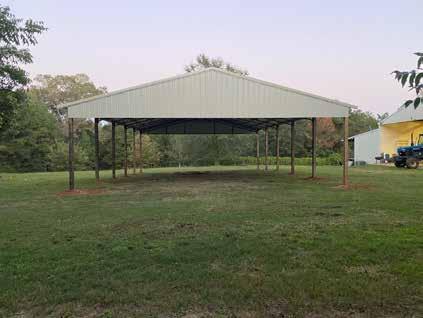
10 Cooperative Farming News
MID STATE STOCKYARDS LLP. 8415 State Highway 97 South, Letohatchee, AL 36047 - Interstate 65 Exit 151 Sale Day: Tuesdays 10:00 a.m. Ask us about our weekly board sales! 1-877-334-5229 | 334-227-8000 www.midstatestockyards.com Clanton205-288-6298 DROP-OFF LOCATIONS: Wetumpka334-313-3695 East AL706-577-1900 Covington Co.334-488-0934 SW AL251-989-3992 PARTNERS: Billy Younkin 334-313-3542 Scott Garrett 334-303-1488 Dick Farrior 334-399-0170 Contact us for your Fall Cattle Marketing Needs! The Fall Sale - November 4, 2023 Office - 601-928-5309 and 601-928-5308 | Registerbarns21@gmail.com 321 Madison Avenue, Wiggins, MS 39577 40’ x 60’ x 12’ - Installed Roof only, Open Gables - $11,500 + tax and delivery Roof only, (2) Closed Gables $13,300 + tax and delivery 30’ x 40’ x 10’ - Installed Roof Only, Open Gables - $7,500 + tax and delivery Roof only, (2) Closed Gables - $8,900 + tax and delivery

helping you focus on what matters most. Find a local agent. AlfaInsurance.com Farmowner coverage property | Dwelling | machinery | livestock | liability
WHY IS MY FOOD SO EXPENSIVE? AND SHOULD I BE GROWING MY OWN ?
BY KEN KELLEY
The Farm and Agribusiness team will routinely get asked about why food, especially beef, pork and chicken, is so expensive. There is also usually a follow-up question of "should I just start growing my own" (fill in the blank – beef, pork, chicken, eggs)? These can be complex questions with a multitude of factors to be considered. We will try to approach the questions from a very basic standpoint.
https://fred.stlouisfed.org/series/A229RX0
So, that means most of us really don’t have any more money and yet things cost more. There are certainly things we can cut back on or do without, but food isn’t one of those things. Food has followed the same upward trends over the same time, with all three of the major proteins being higher at the retail level.
https://fred.stlouisfed.org/series/FPCPITOTLZGUSA
First, inflation makes everything expensive. As you can see from the graph, inflation has been in an extreme upward swing for the last couple of years. To amplify this, real disposable income has trended in the opposite direction for the last year or so.

So, are there reasons why proteins have gone up beyond the inflationary conditions every sector of the economy is experiencing? The short answer is yes. Prices tend to run in cycles that are driven by some very direct factors. The cattle cycle is a well-known concept in the industry. There is usually a direct correlation between the number of cattle and the price of

12 Cooperative Farming News
BUSINESS OF FARMING
https://www.lmic.info/
beef. When there are fewer animals, people still want to eat beef so a constant demand with a lower supply leads to higher prices. That will usually lead to processors paying more for fat cattle, feed lots paying more for feeder calves, and cow-calf producers getting a higher price for their calves. When this happens, cattle producers tend to expand their production to capture some of those higher calf prices. This, in turn, puts more animals in the pipeline which increases supply beyond demand and starts the cycle in the other direction. A good example can be seen in the price of steak vs. the cattle on feed inventory. You see a tendency for retail prices to move opposite of the number of animals in feedlot. It should be noted that this isn’t a perfect relationship, and the timing isn’t always exact.
It means that there are often market forces driving prices one way or the other for our food at the grocery store. It could be supply issues driven by drought in the Midwest, export markets slowed by shipping issues on the West Coast, or layer houses affected by Avian Influenza across the Southeast. There are multiple variables that play into all those situations, and they are not always the more obvious ones like we have already discussed. Feed prices, fertilizer prices, logistics, regulations, and many other components play into that.
Would I be better off to grow my own food ? This is a common question and can also be complex. If you mean, would you be better off financially, the answer is probably not. There is a significant amount of capital, labor, and time needed to produce and process your own proteins. There is also a significant amount of variance between situations and households. However, with most things from beef to eggs it is difficult to produce similar quality products consistently at a lower cost than we produce them in commercial agriculture. I would also point out that we have the cheapest and safest food supply in the world. The other side of the equation is that if you are asking if you are better off growing your own food for your personal peace of mind then you may find the answer to be yes. Lots of folks want to know where their food comes from and what goes into it and how it is processed – for peace of mind the reality may be that it is better to produce your own or buy locally from somebody you trust. However, also keep in mind the very things that drive up costs for commercial producers will also drive up your costs at home, i.e., high feed cost, high fertilizer cost, high diesel fuel., etc. etc.

It is also noteworthy that it isn’t only beef this applies to. Anybody that has bought eggs over the last few months knows that the prices skyrocketed at one point. Why? A supply and demand issue was also present in this situation.



So, what does all this mean to the consumer?
The discussion about prices of our food is often a complex one. There are usually reasons why prices do what they do, and each family must determine how they will spend their food budget. Please feel free to reach out to any member of the Farm and Agribusiness team to discuss food price dynamics.
October / November 2023 13
https://www.lmic.info/ https://www.lmic.info/
YOUR LIVESTOCK'S NUTRITIONAL NEEDS

THREE IMPORTANT FORAGE TEST RESULT NUMBERS
BY JIMMY PARKER
FEEDING FACTS
As fall approaches, it is time to start considering how you will approach your livestock’s nutritional and forage needs and what supplementation may be needed throughout the fall and winter. Hay will likely be an integral part of the feeding plan and to get an accurate assessment of what you have a forage test should be done on the hay you plan to utilize. There are many important numbers on those test results that are useful and will help you make a good decision on when to feed different cuttings to best match your animals' needs based on weather and stage of production. Some of the numbers that should be considered first are crude protein levels, TDN (total digestible nutrients) and NDF (neutral detergent fiber) levels. There are other important numbers but without getting too far into the weeds we can look at these three.

Crude Protein is the most discussed number when buying feed or planning for hay needs and while it is important it is usually not the most important number to look at. Hay will typically range from six percent to occasionally twenty-three or four percent, with most grass hay being in the eight to twelve percent range. Grown cattle that are not lactating don’t need a great deal of protein and most average hay or standing forage will meet their daily needs unless intake is limited in some way. Ewes and does that are dry and not in late gestation would also get all the protein they need from average hay. Lactating animals may have protein needs that are greater than average hay can provide and should be fed higher quality hay or supplemented with a feed or a tub.
TDN is more often overlooked or misunderstood, and it can usually be used as a good indicator of energy levels within a forage or feed. TDN will typically range from the mid forty percent range in mature forages and as high as eighty percent in some energy-rich feeds. Typically, mature cattle would need forage TDN levels to be in the mid fifty percent range or above to do well and higher is better up to a point. The lower the intake will be the higher the TDN percentage needs to be and if access to forages is limited then a higher percentage of TDN will be required to meet animal requirements. If TDN levels are low, supplementing with higher TDN supplements will be needed and lactating animals have a much higher requirement than animals that are not in production.
NDF is another important number and probably the least understood of the three mentioned here among producers when forage sample results come back. NDF is a measure of digestibility and will

indicate intake. The higher the NDF number, the less forage your animal can digest in a given day. NDF values will range from mid to low thirty percent in some grains to seventy or eighty percent in mature forages. And the higher the NDF number is, the slower the feed or forage will be digested and the longer it will stay inside the stomach of the animal. If the stomach stays full, they can’t eat as much and if they can't eat as many pounds of total hay or grass in a day, supplementation will most likely be needed to meet their nutritional requirements.
These high NDF numbers are most often associated with late fall forages and hay that was cut at a mature growth stage. The older the grass is, the higher the NDF (and slower it will be digested), and the lower the protein and TDN usually is. So, it limits your animals in two ways. They can’t eat as much and what they do eat has less protein and energy per pound. Sample results like these really drive home the need to cut hay at the correct time and make sure stockpiled forages were managed properly before frost killed them.
If you do find yourself with some mature hay that didn’t test very well, you still have options. Feeding higher protein or higher energy feeds are the most common solutions and as high as calves are selling, supplementation makes a great deal of sense economically at this time. Another option would be tubs. Stimulyx tubs are almost always a good userfriendly option that will help the cattle digest the poor quality forages in a fairly efficient way. Purina high fat tubs are also a good option in many places where TDN is the most limiting factor. No matter what your forage situation is, sending off samples and knowing just where you stand will pay dividends almost every time. That is really the only way to plan correctly and make good decisions early before feed and supplement prices drift up through the winter feeding season.
October / November 2023 15
The older the grass is, the higher the NDF (and slower it will be digested), and the lower the protein and TDN usually is.
THE END OF OVER-THE-COUNTER ANTIBIOTICS
BY DR. TONY FRAZIER
I have been in the veterinary profession long enough to be able to sit around the campfire and tell tales about the “old days.” It has been a little closer to four decades than three since I graduated. There have been many changes in and around veterinary medicine since I began practice in 1988. Some of the changes have been subtle. Others have been more noticeable. June 11, 2023, marked a change that was a bit of an end of an era in veterinary medicine. June 11 was the last day a consumer could buy medically important antibiotics without a prescription from a veterinarian. The Food and Drug Administration had suggested to the manufacturers of all medically important antibiotics that the drugs that were still available without prescriptions be moved to a prescription-only status. All the drug manufacturers complied. Now the label on those antibiotics has this statement: Caution; Federal
law restricts this drug to use by or on the order of a licensed veterinarian.
Back to my growing-up days, I can remember livestock and horse owners being able to buy penicillin, tetracycline and a few other antibiotics used to treat their animals. The end of over-the-counter antibiotics does show how the world has and continues to change, especially in the area of food animal medicine. Since I graduated from veterinary school, there are a handful of drugs, including certain antibiotics, that have been taken off the list of drugs available for use in food animals. Most of the time the restrictions have been for the purpose of making sure our food supply is wholesome and safe and that we guard against developing antibiotic-resistant bacteria.
Antibiotic resistance is an ongoing war that is fought so that when the need for antibiotics to fight

FROM THE STATE VET'S OFFICE
bacterial infections arises, the drugs will be effective. You may have heard of MRSA infections. If you haven’t, I will give you a quick briefing on it. MRSA stands for Methicillin Resistant Staphylococcus aureus. Staph aureus is a relatively common bacteria that often may be associated with skin and soft tissues, but may cause bloodborne infections, pneumonia or bone and joint infections. In 1961, methicillin, a member of the penicillin family, was introduced into human medicine specifically to treat Staph aureus infections. Within one year, the targeted bacteria were already beginning to show resistance to the antibiotic. Today MRSA infections are not uncommon at all and have sometimes become a serious problem in human medicine.
The MRSA issue, along with the developing of resistance of many other bacteria to various antibiotics, has become the force behind a serious look at the use of antibiotics in both human and veterinary medicine. Judicious use of antibiotics has become an issue that is being dealt with at various levels. The time when children were put on antibiotics for a common cold caused by a virus is over. There is particular emphasis on completing the whole bottle of antibiotics that your doctor prescribes. And in veterinary medicine, antibiotics are now only available as prescription only, just as human antibiotics have always been.
There are many factors that promote antibiotic resistance. The old saying, “Whatever doesn’t kill you makes you stronger,” certainly applies to disease-causing bacteria. Sometimes we do everything exactly by the book and bacteria still can build up a resistance to certain antibiotics. But indiscriminate use of antibiotics is like pouring fuel on the fire. I remember in my days in private practice, someone would bring me a cow or a horse with some type of infection. Sometimes the owner would tell me that they had given the animal 10 cc’s of penicillin last week but the infection
didn’t get any better. Well, penicillin might have been the proper drug to use if it had been administered at the proper dose and for the proper duration. But by giving one dose that was too little to begin with, they had exposed the bacteria to a non-lethal dose of the antibiotic allowing the pathogens to potentially develop a resistance to penicillin.
That is not something that just occurred in animals when over-the-counter antibiotics were available. We humans are not above doing things that promote antibiotic resistance. I am not going to ask for a show of hands, but you know if you are guilty. How many of us can go to our medicine cabinet right now and find partially empty bottles of antibiotics that were prescribed for a bacterial infection. Then when we got to feeling better, we decided to stop taking the antibiotic. Not completing a round of antibiotics as prescribed can certainly promote the building of resistance.
The Food and Drug Administration took a major step in getting a handle on antibiotic use in food animals back in 2017 when they restricted low doses of antibiotics from being used in feed as growth promotants. They also required that any antibiotic going into feed for food-producing animals had to have a veterinary feed directive (VFD). The VFD is sort of like a prescription that required a very definite group of animals to be given the feed with the antibiotic, stating the specific reason for the treatment and a definite period of time the feed can be given to the animals.

Both the VFD regulation and the end of over-thecounter antibiotics have made the veterinarian-client-patient-relationship (VCPR) essential to treat animals with bacterial infections. The VCPR requires that the veterinarian assumes the responsibility for making judgements regarding the health and medical treatment of the animals. It also requires that the veterinarian has a general knowledge of the animal or animals to be treated and their condition. And finally, it requires that the veterinarian be available for follow-up evaluation of the treatment.
Over the years I have often asked producers who they used for their veterinary services. Sometimes, the answer was that they didn’t use a veterinarian and that they did most everything themselves aided with the availability of over-the-counter long-acting tetracycline. A study from a few years back indicated that about 70 percent of the antibiotics used in cattle were tetracyclines. That may have been the result of the ability to buy tetracycline injectables at the feed store, Co-op, or online large animal supplier. I am not sure the percentage will change, but from June 12, 2023 forward, a prescription will be required to purchase tetracycline or any other medically important antibiotic for animals.

October / November 2023 17
LOOKING AHEAD
BY BRAD MEYER
As harvest progresses, growers are beginning to think about their variety selections for next season. Variety selection is a management decision that is critical to next season’s harvest. In all crops, yield potential is set when variety selection is made. Agronomic and pest management practices can maintain the genetic yield potential of a variety by minimizing limiting factors, but they cannot increase it. This makes variety selection and the way in which it is done a high-value task.
“Variety selection is not about identifying which lines did best over the past year – it is about predicting which ones will do best in the future,” says Jim Rouse, director of agriculture at Iowa State University, pointing out the pitfall of only looking at the top of last year’s variety test.
Yield is the result of the interaction between genetic potential and the environment. A variety should be chosen for a field because it has the genetic char-
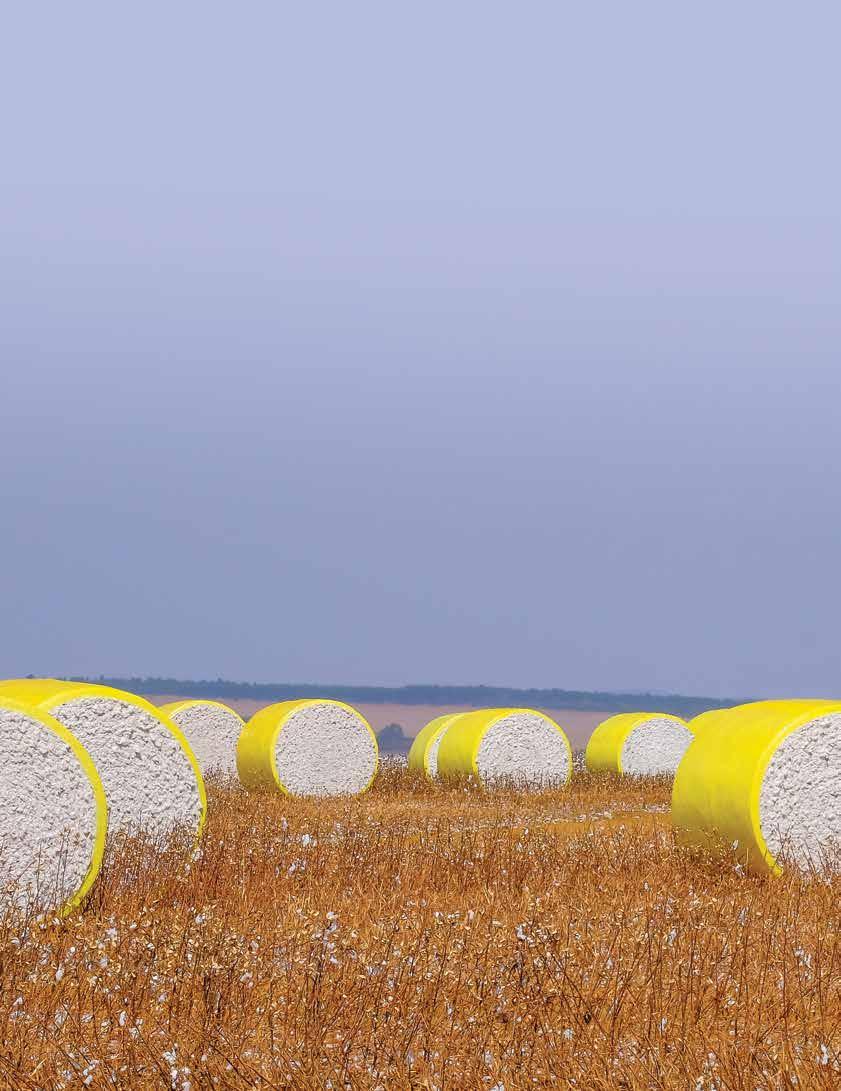
acteristics to perform well given the environment in that field. While yield is always the goal, selecting a variety from a trial based solely on yield without regard to the environmental conditions in which it grew may not result in a good performance in the future. Contrary to the claims of local meteorologists, predicting rainfall patterns and temperatures for the coming growing season is not possible.
But, when attempting to predict growing conditions for the upcoming year, growers know a great deal about the environment in which their crops will develop. A grower knows soil characteristics, fertility levels, crop history, and the past incidences of pests and pathogens.
When choosing a variety, the first criterion should be availability. Management plans based on varieties in short supply usually end up including poorly adapted substitutes added at the last minute. The second decision should be which, if any, genetically modified (GM) traits are needed. The benefits of these traits
“Variety selection is not about identifying which lines did best over the past year – it is about predicting which ones will do best in the future.”
- Jim Rouse, director of agriculture at Iowa State University
WHAT’S THE POINT WITH GREENPOINT AG
18 Cooperative Farming News
are great if they eliminate a pest that is a limiting factor or fit into a weed control system already in place. The third criteria are the defensive traits needed to minimize limiting factors. These traits include disease resistance, insect resistance, nematode resistance, lodging and shattering potential, fallout in cotton, and tolerance to stress. While things such as disease resistance or fallout are not normally prioritized before yield potential, a variety will not be able to reach its yield potential if overwhelmed by a limiting factor.
The last and most discussed criterion in variety selection is yield potential. Traditionally, the standard for proving a variety has been three years, but that period is now the life span of many varieties. With genetic advancements occurring in varieties and hybrids at an unprecedented pace, it’s now necessary to evaluate and select varieties in a short period of time. So, how do we go about “predicting which lines will do well in the future” when faced with limited years to gather data? To choose a variety that will perform in an unknown environment:
1. Look at performance data across as many environments as possible.

2. Choose the variety that performs well in all of them.
3. When faced with limited years, increase the number of locations looked at each year.
Many sources of information on yield performance are available from universities, Extension agencies, seed companies, and growers. All these need to be considered. Though data from trials with similar limiting factors to your own is beneficial, looking at locations with a different set of limiting factors is just as important because good performance in both shows stability in variety performance.
It's very important to know the source of information used, so you can be aware of the type of environment in which the trial was conducted and the data quality. This is easy with university and Extension data; they usually publish agronomic and trial quality with the results. It can be more difficult with seed company data, but trials conducted on the farm by seed companies can provide practical information and are important to consider. A good practice to ensure quality information is to visit trial locations during the growing season. Growers should consult multiple sources of information on yield performance including universities, Extension, seed companies, and other growers.
GreenPoint Ag has conducted a variety of trials on corn, cotton, soybeans, and wheat during the 2023 growing season in many parts of the state. Reach out to your local Co-op for information on trials and yield results.

October / November 2023 19
CHANGING SEASONS CAN BRING ABOUT POTENTIAL PROBLEMS FOR HORSES AND HORSE OWNERS
 KAREN E. DAVISON, PH.D.
KAREN E. DAVISON, PH.D.
Pasture quality fluctuates with every season, but the shift in quality from summer to fall is significant. During the fall, there are often warm, sunny days and cool nights. Pasture plants manufacture sugars in the presence of water, carbon dioxide and sunshine, and then
use those sugars to fuel growth during the night. However, when nighttime temperatures drop in the autumn, it becomes too chilly for plants to grow and the sugars are stored for later use. This leads to a concentration of stored sugars in the plants, which may increase
HORSE SENSE FROM PURINA
20 Cooperative Farming News
the risk of digestive upset or laminitis in some horses. Horses at most risk are those that are significantly overweight or those that have trouble managing normal blood sugar levels and are sensitive to sugar content in the diet.

Changing seasons also mean drastic swings in weather conditions and temperatures. This, combined with a major diet adjustment of moving from pasture to hay, can increase the chance of digestive disturbances. While not scientifically proven, many horse owners and veterinarians have experienced what appears to be an association between changes in barometric pressure and incidence of colic episodes in horses. A dramatic drop in temperature often causes horses to drink less water, and at the same time, horse owners will often increase the amount of hay fed to help horses stay warm. More hay and less water consumption together may lead to impaction colic.
As we move into fall and winter, hay becomes the major forage source for many horses. Switching from pasture to hay or getting a new supply of hay represents as big a change to the horse as a change in grain. These significant dietary adjustments should ideally be made gradually to decrease the risk of digestive upset. Horses should be fed good-quality hay
to maximize nutrition and minimize potential digestive problems. Good-quality hay, of any variety, will be clean and have a high leaf-to-stem ratio, small-diameter stems, few seed heads or blooms, a fresh smell and appearance, and a bright color (faded, yellow or brown color may indicate aged hay or poor storage conditions). The maturity of the plant at harvest determines the hay quality more than any other factor. Young, leafy, immature plants contain more protein, energy and minerals than older plants with thicker stems. Also, as a plant matures, it contains more indigestible fiber (lignin), which reduces nutrient availability. Lower-quality hay must be supplemented with higher-quality feed to maintain horses’ good condition and health.
Fall is a season of transition and an important time to evaluate the quality of forage available for your horse and whether the grain ration is appropriate and adequate to meet your horse’s nutrient requirements. When winter arrives, horses must be in good condition to be able to withstand colder temperatures. Adjusting grain rations in the early fall will prevent weight loss due to lower-quality forage and, if horses need to gain weight, there is still time for a thinner horse to gain some before the cold weather really sets in.
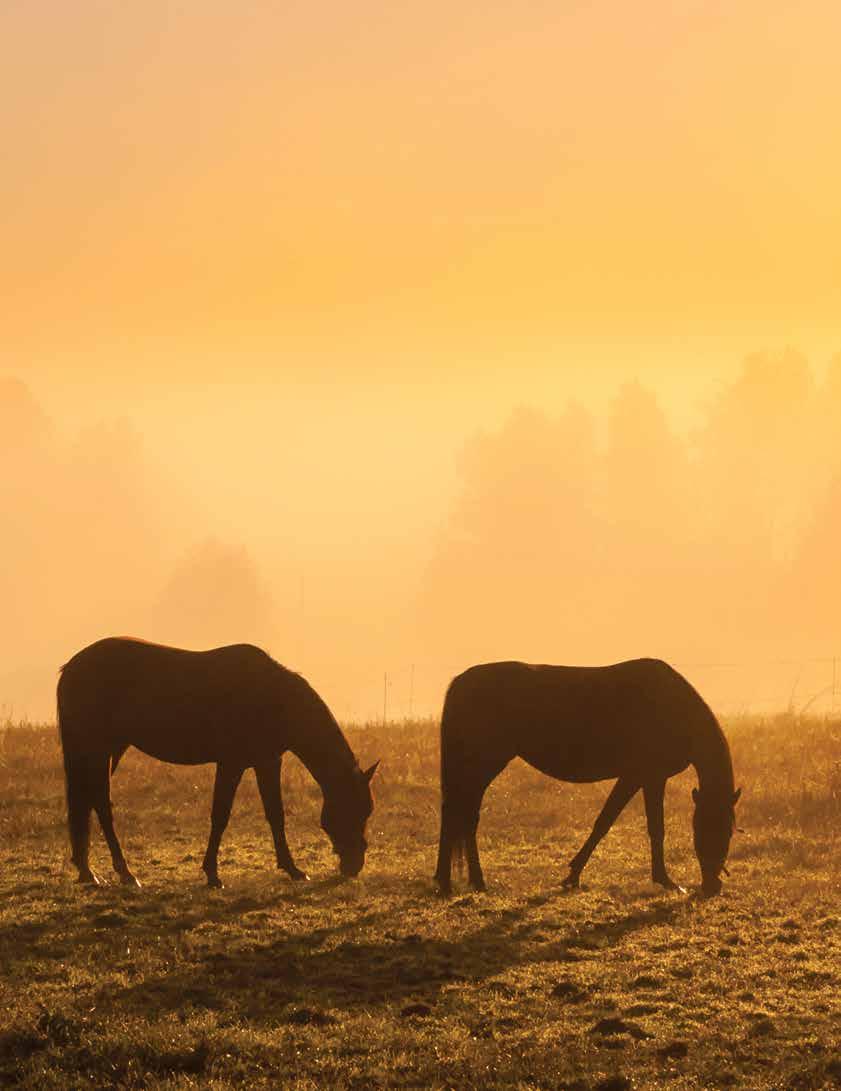
October / November 2023 21
CORNERCo-op

RYAN JENKINS
A PASSIONATE CO-OP CUSTOMER FEEDING
THE WORLD
BY TIFFANY LESTER
In the heart of Santa Rosa County, Florida, Ryan Jenkins and his father Rennie lead Jenkins Farms. His sons make it a fifth-generational, family-owned operation specializing in row crops including peanuts, corn, cotton, soybeans, wheat, and oats, which has become synonymous with agricultural success.
Growing up with farming in his blood, Jenkins knew from an early age that he wanted to follow in his grandparents' footsteps. “I grew up loving farming and knew that’s what I wanted to do when I got older. After I graduated high school, I started renting some of their land and began what is now known as Jenkins

22 Cooperative Farming News
Farms. And now today, we farm around 2,000 acres of all non-irrigated land,” said Ryan Jenkins.
“I love every part of it. The number one thing I love about farming is that no two days are the same. I don't have an office job where I go in, sit down and do the exact same thing every day, or I go to an industrial-type job and I do the exact same task every day. Another thing I love about farming, is at the end of the day, you are always helping people. I'm not doing it for anybody else, for them to pat me on the back or anything like that. I do it absolutely for the love of my fellow man and for the love of working with God's creation, for being outdoors all day long. I've worked hard all my life, but I've never really worked a day in my life.”
Lying near the Gulf of Mexico, Jenkins Farms benefits from timely afternoon storms that provide necessary rainfall for exceptional yields. “We rival people that farm irrigation land with our yields,” added Jenkins. But that’s not to say there aren’t any problems. Jenkins explains they still deal with pests, disease, and fertility issues, and that’s where his relationship with his local Co-op comes into the picture. He says the collaboration with Jay Peanut Farmers Cooperative has been essential to his farming success.
“I bleed Co-op colors when I bleed. Everything I do is through Jay Co-op. It's just a huge family feeling. As a whole, the Co-op and all the different divisions have been a great part of our success at Jenkins Farms for several years now,” Jenkins said.
Jenkins works closely with Jay Peanut Farmers Cooperative General Manager Ryan Williams, outside sales representative Bae Lamastus, and GreenPoint Ag agronomy professionals Drew Schrimsher, Tyler Holley, Amy Winstead and Trey Colley.
“They are truly invested in my success. They want to make sure I succeed. And it doesn't matter what it takes for that to happen. They understand that the farmer's success is directly proportional to their success. Without the farmer's success, all these other companies' success wouldn't be there. It’s that feeling of ‘my problem is our problem,' ‘my success is our success.' Farming can be a lonely job sometimes and you can feel that the problems that arise, you're out there all alone trying to figure it out. But not when you have this big Co-op family. Everybody gets on board until we find out an answer to our problem. I'm 100% Jay Co-op and honestly, I don't even shop around for prices or anything. I am huge on relationships. That's why I do

October / November 2023 23
The Jenkins family: Cole, Ryan, Debra and Chase. Jenkins Farms is 2,000 non-irrigated acres of peanuts, cotton, soybeans, corn, wheat and oats in Jay, Fla.
my business there,” Jenkins explained.
It’s a partnership the Co-op also values wholeheartedly. “We appreciate Jenkins Farm and their loyalty to Jay Peanut Farmers Cooperative. We look to continue to provide them with premier customer service to advance their farming operation,” said Jay Peanut Farmers Cooperative General Manager Ryan Williams.
Jenkins was recently awarded the prestigious 2023 Farm Press Peanut Efficiency Award for the lower Southeast region. This recognition solidifies his commitment to excellence and serves as a testament to his dedication to sustainable farming practices.


“I was very surprised. I would have never just applied for that. But Libby Johnson, who served as our Extension agent, nominated me and asked me to please apply, so I did. I really couldn't believe it because we're competing against Florida, Alabama, and Georgia in this region. I really couldn't believe it. I still can't believe it,” laughed Jenkins.
Even after winning such an honor, Jenkins believes there’s always room for improvement. “I'm not saying don't be thankful for what you have, but I don't think you should ever be satisfied with whatever your outcome is. You make 6,000 pounds of peanuts, then I want to know why can't I make 7,000 pounds of peanuts,” he explained.
Sometimes it’s all trial and error with a lot of educated guesses. “Break the mold, try something differ-
ent. It might not work, but it might,” said Jenkins.
Jenkins says just applying for the Farm Press Peanut Efficiency Award has been beneficial to him and encourages other farmers to take the leap and apply. “Fill it out and really see where you are with things. We all know roughly how much it costs per acre to do this or that. But this really forces you to sit down and put a pencil to every single thing you do regarding your peanut crop. And it's so neat to be able to actually see real numbers down to the penny, down to the pound of what you've done and how could you improve on that.”
Beyond farming, Jenkins is a passionate advocate for agriculture. He uses various platforms including social media and podcasts to connect people with the source of their food and fiber, aiming to foster understanding and appreciation for the vital role of family farms in feeding and clothing the world.
He’s even given his social media followers a look straight from the field at the “peanut M&Ms” he grows thanks to the magic of video editing.
“Years ago, everyone was connected in some way or another. Your grandparent farmed or your uncle or you name it, somebody a generation ago, somebody you knew – they farmed. And nowadays, the greatest part of the population is greatly removed from agriculture. So, I really work hard on a daily basis trying to tell our story. It's family farms like ours that are feeding and clothing the world. I just really want people to understand that, and to know that, hey, we're on the same team. There's not a better steward of the environment than a farmer.”
Feeding and clothing the future – made possible through determination, innovation, the love of farming and a strong partnership with the local, quality Co-op.
24 Cooperative Farming News
Farm Press Associate Editor Brad Haire giving Ryan Jenkins the 2023 Farm Press Peanut Efficiency Award for the lower Southeast.
Rennie and Ryan Jenkins stand on the field they’ve been farming for decades.
Hidden Rivers Farm
Hartselle, AL
We are two sisters, who grew up on a farm in sweet home Alabama, and who loved the joy farm life provided us. We loved it so much, in fact, that we teamed up so we could share that joy. We believe we can learn the most valuable lessons while we are having fun, that the outdoors is the best place to be, and there’s nothing be er than handcra ed, home grown memories that will last a lifetime. We will be open every Friday, Saturday, and Sunday September 22th - October 29th. We invite you to come out and escape from the hustle and bustle of everyday life to enjoy the beautiful outdoors with sunshine, fresh air, and activities for the whole family. Wind your way through our maze, pick out the perfect pumpkin, meet our family of farm animals, or play with our wide selection of fun games. ere's plenty of room to run, play, explore, have a picnic, or even relax in the shade. Let your day be fueled by childhood imagination and visit the perfect place to breathe deep, laugh loud, run hard, and make memories. Because Hidden Rivers Farm, and two Alabama sisters, understand just how much you deserve to play!

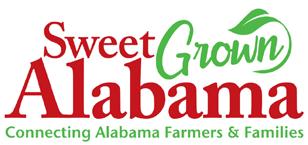
October / November 2023 25
hiddenriversfarm@gmail.com Facebook: Hidden Rivers Farm Instagram: HiddenRiversFarm
















26 Cooperative Farming News
Awards Pike County Cooperative - Troy 5 Years of Service 10 Years of Service Genco Farmers Cooperative - Elba 10 Years of Service Madison County Cooperative - Sco sboro 10 Years of Service 10 Years of Service Farmers Cooperative Inc. - Live Oak, Florida 15 Years of Service Tennessee Valley Cooperative - Athens 20 Years of Service Cooperative - Goshen 20 Years of Service Luverne Cooperative Services 20 Years of Service Cooperative - Holly Pond 20 Years of Service Cooperative 25 Years of Service Madison
25 Years of Service
of Service Cooperative - Florala 25 Years of Service Genco
Cooperative - Hartford 30 Years of Service Cooperative - Enterprise 45 Years of Service
2023 Years of Service
County Cooperative
Not
Pictured: Ryan Williams - Jay Peanut Farmers Cooperative - 15 Years of Service Steve Lann - Marion County Cooperative
- 35 Years
Farmers
2023 Pacese er Awards
Seed Volume Award
Tennessee Valley Cooperative
CPP Dollars Award
Tennessee Valley Cooperative
CPP Growth Award
Genco Farmers Cooperative - Hartford
WU Proprietary Growth Award

Blount County Farmers Cooperative
Pro Products Volume Award
Tennessee Valley Cooperative
Pro Products Growth Award
Tuscaloosa Farmers Cooperative
Pro Products Sales & Support Award
Colbert Farmers Cooperative
CN Volume Award
Tennessee Valley Cooperative
CN Growth Award
Talladega County Exchange
CN Sales & Support Award
Marshall Farmers Cooperative
Seed Growth Award
Madison County Cooperative
Seed Largest Percent Increase Award
Blount County Farmers Cooperative
AccuField Volume Award

Tennessee Valley Cooperative
AccuField Innovation Award

Tennessee Valley Cooperative - Moulton
Dollar Growth Award

Morgan Farmers Cooperative
Percent Growth Award Quality Cooperative


Spring Plant Sale Award Quality Cooperative
Spring Plant Sale Award
Tennessee Valley Coooperative - Athens
Highest Co-op Sales Award
Pike County Cooperative - Troy
Percent Increase Award
Colbert Farmers Cooperative - Tuscumbia
Top Purina Tons Sold Award
Blount County Farmers Cooperative
Top Co-op Tons Sold Award
West Geneva Farmers Cooperative
Highest Volume Award
Andalusia Farmers Cooperative
Highest Growth Percentage Award Quality Cooperative
October / November 2023 27
Eli Moore Triple A Award
Congratulations

Tara Newman
Congratulations to Tara Newman on earning the Eli Moore Triple A award at the 2023 Summer Managers Meeting. This award is given to an employee who goes the extra mile while always keeping an awesome attitude.

Tara started out in AFC’s Future Leaders Program 16 years ago and has been a member of the AFC family ever since.
She worked at the Talladega County Exchange –Columbiana store for a few years before coming to the Main Office in Decatur, Alabama. Tara is currently the Merchant Ag Lead in AFC's IT Department.
We receive so many compliments about Tara from cooperatives and divisions about how she always goes above and beyond the call of duty.
Some messages we received include the following:
“She has helped the stores with multiple computer issues over the past few months and is always kind and courteous. She has even gone the extra mile to call back a few days later to ensure that the issues she has handled are still working efficiently.”
“Her professionalism, responsiveness, and ability to provide clear and concise guidance along the process has made the transition much easier for everyone involved.”
“She has made life a lot easier and been available at all times to assist and answer questions. I am not sure what awards are given out in Decatur or other recognitions, but at the very least, let her know how much she is appreciated and what a great job she did for us.”
AFC is incredibly thankful to have Tara Newman on our team providing the highest quality service to our member cooperatives and divisions.
28 Cooperative Farming News



October / November 2023 29
WEST MORGAN HIGH SCHOOL FFA CHAPTER
 BY SAVANNAH NOWELL
BY SAVANNAH NOWELL
The West Morgan High School FFA prides themselves on creating a family atmosphere for students. They want the school and FFA chapter to be students' home away from home. This close bond has created many exciting opportunities for the school and community.
To start off the school year they host an annual community tailgate. This event is where clubs, organizations and other faculty set up tents for the community to come out and enjoy. The FFA chapter
chose to set up yard games and giant Jenga this past year. However, their games were not just ordinary yard games. A giant game of Jenga featured AG Facts on each block, so anytime a child came up to play they were also educating them about agriculture. This was a great opportunity for the chapter to advocate for agriculture while educating members of the community.
Another activity that got students excited about the West Morgan FFA was the Joint Leadership Development Conference hosted for all career technical
30 Cooperative Farming News
FFA SENTINEL
From the left: Honesty Stoner, Krystal Suggs, Julie Rutherford (secretary}, Drake Ward {President}, Bree Henderson {Vice President}, Kade Jones {Sentinel}, Alexa Arroyo, Elina Ocampo, Abigail Garcia, Kati May
student organizations (CTSO) in Alabama. Several FFA officers were able to attend the event where they learned how to improve their leadership skills. This was also a great opportunity for them to connect with other CTSO and FFA members from across the state.


The West Morgan FFA also prides itself on contributing within the community. One of their community service projects was making Christmas cards for the local nursing home. Ever since COVID, many people in long-term health facilities do not get to visit with their families as much as they may have before. This can make the holidays especially lonely. The chapter members made over 100 cards which they hand delivered to nursing home residents while they spent a few minutes visiting and bringing holiday cheer. This was a great opportunity for them to get together during the holidays and give back to the community.

While the chapter has participated in many fantastic activities this past year, one in particular was their favorite. FFA members went to the local elementary school and read agriculture-based books to the students. A total of 10 FFA members participated in this event. Proudly wearing their blue corduroy jackets and official dress, the students loved working with the next generation of FFA members. The elementary students were so excited and asked many questions about agriculture and how they too could get one of those cool blue jackets. The West Morgan FFA members felt like this was important for them to do since most of the younger students do not learn about FFA or agriculture until the seventh grade. Even though the younger students still have a few more years until they can take any Ag courses, this was a great way to get them thinking of something to look forward to.

The West Morgan FFA Chapter is excited about the future and is already thinking about the great
things they will do in the coming years. They know how important FFA is to the school and community and are looking forward to playing their part as the next generation of leaders.
October / November 2023 31
Our FFA members at the Annual Community Tailgate with our AG Fact Giant Jenga.
Our FFA members making Christmas cards for the local nursing home
FFA members read books to the children at the local elementary school.
2022 JLDC Leadership Conference
THE CHANCE TO TRY SOMETHING NEW ALABAMA INSTITUTE FOR THE DEAF AND BLIND
BY CAROLYN DRINKARD
Kalie Mitchell is an agri-science teacher. In her first teaching job, Kalie chose to become a 4-H volunteer, something she enjoyed tremendously. Later, after she started teaching at the Alabama School for the Blind in Talladega, she contacted Kim Good, the 4-H Foundation Regional Extension Agent in Talladega County, about having 4-H in her agri-science classes.
Kalie started the ASB 4-H clubs in 2022, holding meetings in her Ag classroom. Some of the competitions are a part of class for a grade and some are optional. Many of the 4-H competitions directly relate to the Alabama Course of Study for Agriculture-Science.
Kalie requires that her students participate in some of the competitions, and uses the incentive of class credit. The results have amazed not only the teacher, but also the students.
“With some competitions, my students realized this was something they didn’t know they were interested in,” said Kalie. “They would never have tried, if I had not required it as part of the class.”
In the Creative Endeavors competition, Kalie had several students try something they had never done before. She gave them a broad range of options as to how they could do their projects. One student tried sculpting and made a clay flower vase with a rose. She decided not to paint it, choosing to leave it white. She named her project “A Lesson in Patience.” Her project took her all the way to Regionals.
Another student loved chickens. Since this student did not have functional vision, Kalie created a mixed media project, a tactile art he could feel. Kalie helped him with his cardboard cutout of a chicken. He then designed
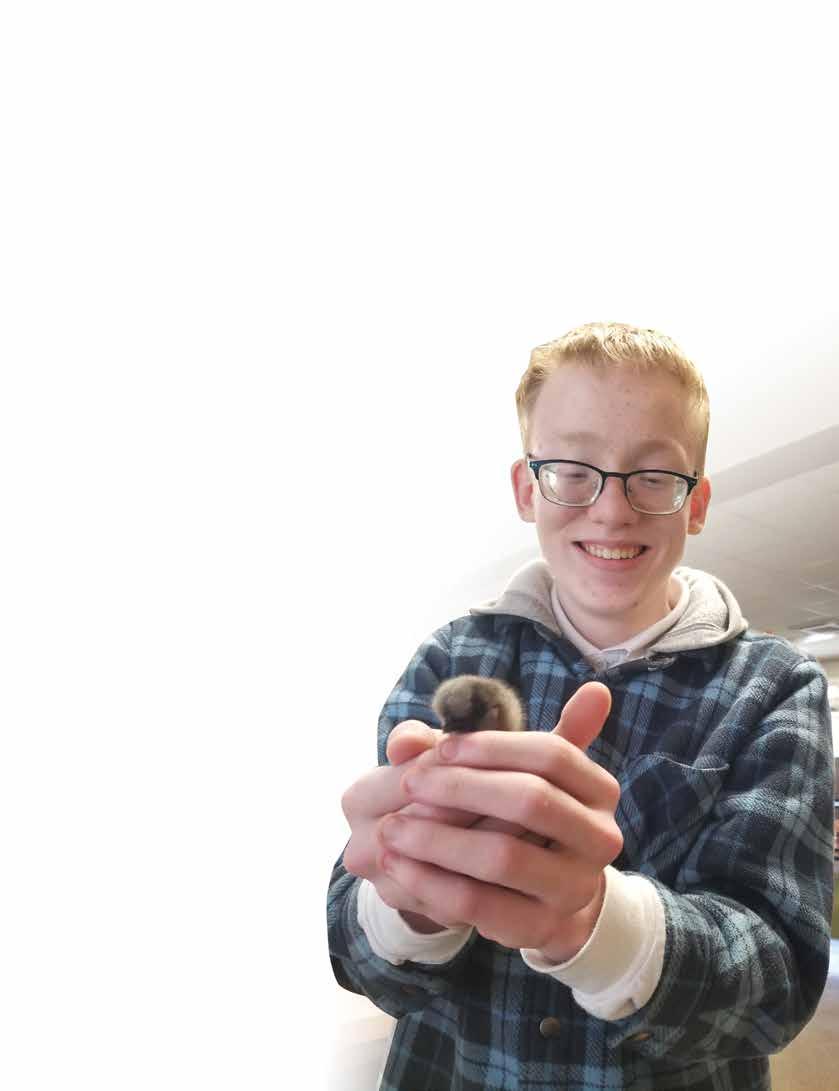
4-H EXTENSION CORNER
Dale Dobbins, 2nd in “Extreme Birdhouse”
and glued the project himself, creating his version of a chicken.
Some students participated in the "Bake-off." Kalie did not require this project, but she had some to show interest and participate. Kalie’s goal is to collaborate more with the Home Economics Department in the future to allow more students to participate from both classes.
Since most students in Kalie’s classes at the Alabama School for the Blind have different levels of vision, she stresses “sensory efficiency,” which helps students learn to use their senses effectively to accomplish different tasks.

“4-H projects give my students opportunities to try projects that they may not have thought to try, or thought they could not do, and that is great. They learn how to overcome their unique challenges to accomplish new goals."
Kalie’s classes breed, raise, and show bantam chickens. This relates to the 4-H Chick Chain; however, Kalie’s classes already had their own chicken project prior to starting 4-H. During Kalie’s first year at ASB, students hatched Bantam Polish chicks. In the second year, they grew out their chicks and hatched more. In the third year, the most recent school year, they showed their birds in local bantam poultry shows. In the Junior Division, one Bantam Polish hen won “Reserve Champion” and another won “Fourth Best of Show.” This created much interest in the program. Kalie plans to take her students to various chicken shows in the fall to show the new birds they have raised, but it takes up to a year to get the birds ready to show.
Many birds were kindly donated to the program this show season by local breeders.One of the donated birds won Overall Junior Show Champion for students at their last show. Kalie’s goal is to build the program so that her students can raise their

own birds for show and have a variety of breeds to choose from. Once she establishes the school breeding flocks, the students can start their own breeding programs. Then, after they graduate, they can carry this on as either a hobby or as an income resource.
“The ASB poultry program, along with 4-H projects we complete in class, are a great way to reinforce the Expanded Core Curriculum for students who are visually impaired,” stated Kalie. “This curriculum includes career education, compensatory skills (braille, tactile graphics, etc.), independent living skills, orientation and mobility, recreation and leisure, self determination, sensory efficiency, social interaction skills, and assistive technology skills.”
Another program that does overlap with 4-H is the gardening program. The Alabama School for the


October / November 2023 33
Angel Meyer, 1st in “Bake-off”
B.J. Hayes, 1st in “Creative Endeavors”
Ava Williams, 1st in “Speak Up AL Persuasive”
Clara Scelsi, 3rd in “Extreme Birdhouse”
Blind Ag classes have raised beds filled with tomatoes, okra, beans, peas, squash, peppers and corn. In addition to the campus garden, ASB collaborates with AIDB's E.H. Gentry, Helen Keller School, and Alabama School for the Deaf Ag classes to utilize the AIDB Joe Tom Armbrester Agricultural Center where a commercial-sized garden is planted and maintained by all campuses. The students take field trips there during the year to plant and help with the harvest of these plants.
“The garden opens up opportunities to try new things,” Kalie said. “Even if they have no interest in gardening or starting a career in agriculture, I hope to encourage them to appreciate where their food comes from and what it takes to grow it.”

ASB Agriscience students competed at the 4H East Central Regional Congress in May, and every single one of them placed in their age group. Will Burgess won 2nd in “Speak Up AL Informative”; BJ Hayes won 1st in “Creative Endeavors”; Angel Meyer won 1st in the “Bake-off”; Wesleigh Underwood won 1st in “Creative Endeavors” ;Ava Williams won 1st in

“Speak Up AL Persuasive”; Clara Scelsi won 3rd in “Extreme Birdhouse”; Erin Paulson won 1st in “Container Gardening”; Saja Elawad placed 1st in “Have I Got a Story”; Mia Smith placed 1st in “Graphic Design”;Dale Dobbins placed 2nd in “Extreme Birdhouse”; Clinton Sanders placed 2nd in the “Junior Beef Cook Off.” One student also placed 2nd in “The World I See” Photography competition.
“They worked so hard to prepare for this event,” said teacher Kalie Mitchell, “and we are so proud of them!”
All senior level 4-H members will have the opportunity to compete at the state competition.
“These 4-Hers from ASB are great to work with,” added Kim Good, 4-H Foundation Regional Extension Agent in Talladega County. “They’re kids with challenges in life, but they always amaze me and teach me so many things.”
The 4-H program at ASB has not only reinforced the Agri-Science curriculum, but it has also given students opportunities to do what they have never gotten to do before.



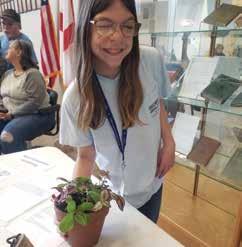
34 Cooperative Farming News
Erin Paulson, 1st in “Creative Container Gardening” Clinton Sanders, 2nd in “Junior Beef Cookoff” Saja Elawad, 1st in “Have I Got a Story”
Wesleigh Underwood, 1st in “Creative Endeavors” William Burgess, 2nd in “Speak Up AL Informative” Mia Smith, 1st in “Graphic Design”
ENVIRONMENTAL DAY
BY JAMIE MITCHELL
When I heard the theme of this issue’s magazine was “harvest,” it prompted me to think of how much the Clean Campus Program has in common with farming. When schools initially sign up for the program, I envision a fresh field ready to be planted. Next, we sow seeds of education to students throughout the school year with our campus visits, conducting campus cleanups and providing contest opportunities for students.
By the end of the school year, students that are exposed to the Clean Campus Program are just like fullgrown wheat in a field. They have grown and matured all year long in their litter-prevention education and are officially better stewards of our beautiful state. The true harvest comes when these students spread the word to family members or simply pick up a piece of litter rather than walking right past it.
This summer, I had the opportunity to speak at the

Poarch Band of Creek Indians’ Environmental Day. The students rotated through many stations to learn about everything from local animals to caring for our environment. Many seeds were sown that day with the students, and the harvest should come soon as they join in cleaning up their local Adopt-A-Mile and participate in our contests.
It is our sincere hope that your harvest this year is better than ever! We hope the same for the efforts of the Clean Campus Program as we reach thousands of students this school year to help keep Alabama litter-free! If a school near you would like to learn more, have them visit www.alpals.org. I am happy to answer any questions, also, at (334) 263-7737 or jamie@alpals. org. Alabama PALS programs are free to schools thanks to our state partnerships and corporate sponsors.
October / November 2023 35
PALS
CLOSING THE DEAL A ONE-TWO PUNCH TO BRING WHITETAILS CLOSE
BY TODD AMENRUD
A big buck stood at the edge of a picked corn field about 200 yards away. Even at that distance I could see he was a definite “shooter.” Rather than skirting the field and coming by my stand just off of the corner, he cut straight across the middle. What to do!? I picked up my rattle-bag and cracked it as hard as I could. He stopped and turned his head in my direction. I hit the rattle-bag a second time and he came on a steady trot. Once he reached 100 yards he slowed to a fast walk and started to swing downwind of where he had heard the sound. Long story short – he stood 100 yards downwind of me hardly moving a muscle for almost five minutes. The only movements were his ears searching for “the two bucks he had just heard” and his nose waving in the breeze scanning for other supporting evidence. He turned and slowly disappeared over the ridge.
What makes a set of circumstances seem real to you? If you can see it, hear it, smell it, touch it – the more senses we satisfy, the more that situation will seem real. It’s also true for whitetails and other animals! By using multiple techniques at once a hunter can appeal to a variety of the whitetails’ senses. On that day I sure wish I would have had some scent set-up or a decoy placed out to draw his attention and coax him into bow range.
Does, fawns and young bucks will often ramble straight into a well placed decoy, scent placed out properly or a vocalization that sounds authentic, but a mature buck almost always

needs confirmation from more than one sense before they enter into the unknown. They do trust their sense of smell entirely, but if they see something or hear something and aren’t sure, they’ll almost always wait for confirmation before proceeding further.
Whitetails believe their sense of smell completely and if you can fool it, you have it made. Just like sight is our most believable sense, after all – “you’ve got to see it to believe it,” for whitetails their entire life revolves around their sense of smell. That doesn’t always mean using scent to draw them in, it also means practicing a strict regime of scent elimination. In fact, it’s probably most important to keep foreign smells completely out of the picture. Scent Killer Gold is one of my most important tools. For instance, if a mature buck smells the sweet odor of estrus, but there’s also a danger smell; their instinct for survival outweighs all else and all your work will go for naught.
Decoying can appeal to their sight, calling can deceive their hearing, and scent, or the lack of it, can con their sense of smell. Why not do something to play to more than one of their senses at a time? After having success with scent and with calling, I've been experimenting more with decoys. Obviously decoys are not something that most people use every time they venture afield, but using scent and calling (or rattling) are tactics that I use often.
I find that when using decoys, adding scent, calling, or a combo of both will almost always
OUTDOOR LOGIC WITH BIOLOGIC
36 Cooperative Farming News
In the same way humans need to “see it to believe it,” whitetails need to “smell it to believe it.” Their sense of smell is the only sense that they trust completely. (Photo Credit: Bruce MacQueen)

October / November 2023 37
help, but you have to pay attention to a few details. First, you have to start with the correct decoy. I believe that decoy posture and movement are particularly significant.
Some decoys are in an alert posture. This typically brings other deer in ready to act and edgy. You'll often get them to come to within forty to sixty yards, snorting and stomping the ground at your decoy…or maybe it’s at whatever has your decoy so alert. Sometimes I may want an alert, more intimidating posture, but for most deer throughout most of the season you’ll be better off with other less intimidating postures.
When is it natural for a standing deer to be totally motionless? – When it’s alert, when something is wrong or out of place, or just before it’s about to bolt? I’ve done a number of different things to add motion to decoys – from tying a string to a chicken feather or white hanky, taping the string to the hind end or ear of the decoy and letting the wind move it, to tacking a real whitetail-tail to the hind-end of the decoy and operating it with monofilament line. Granted, in a fifteen MPH wind the chicken feather starts fluttering so fast it looks like the decoy will soon take flight, but I believe
even that extreme motion is better than no motion at all. There are decoy kits on the market to help convert standard decoys into motion decoys and decoys that come with moving parts so hunters have many options, but motion is a definite key.

Sometimes an alert posture will work. In fact, sometimes I want a ready-to-act, aggressive posture. For instance, if I’m after a mature buck, then “playing the competition card” and using aggressive tactics has worked great for me. When after younger bucks or any deer, success depends on many other factors. The biggest detail to keep in mind is – you must give “that specific deer” a reason to interact with your set-up.

What time of year is it? Are you after a buck, doe, or will any deer do? What age-class buck are you after? Best advice here, think about what the “specific deer” wants at that particular time of year and give them a reason to close the distance. For any deer, any time of year, I feel a decoy in a feeding, greeting or bedded posture is best.
When using scent with your decoy you first have to start by eliminating foreign smell. After your decoy is cleaned in Scent Killer Soap, only touch it while wearing gloves and make sure it's stored in a place where foreign odors are not going to transfer onto it. If you
38 Cooperative Farming News
When presenting a set-up to the deer, you need to give the specific deer you are after a reason to close the distance. Maybe the reason is competition, or maybe it’s breeding. Think about the sights, sounds and smells that would be present with that scenario and duplicate them. (Photo Credit: Todd Amenrud)
When a buck, especially a “mature” buck, enters a situation he’s not sure of he’ll almost always swing downwind to scent-check the area. Next time be prepared by having some scent set-up. This buck loves the smell emanating from the wick. (Photo Credit: Paul Marion)
have to transport your decoy, place it in a garbage bag or something that will seal out foreign odors.
When choosing lures and scents, again, think about what the specific deer you’re after wants at that specific time of the season. For instance, early season I might use plain buck or doe urine…just something to add realism to the scenario. Closer to the rut with a buck decoy sometimes I'll use a combo of Active Scrape and Mega Tarsal Plus. One gives a full spectrum scrape aroma and the other is a territorial intrusion scent. Trying to create the illusion my fake buck is moving into his breeding territory. Think about "how" and "why" a buck might interact with your set-up. Try and make it seem as natural as possible and again, “Give them a reason to close the distance.”

When dispersing the scent, I prefer to put the scent on a Key-Wick near the decoy rather than placing the smell right on the decoy. Simply because a week later your decoy smells like “last week’s deer pee.” This way I don’t have to constantly scrub down my decoy. Keep the decoy clean!
Calling is another weapon in your arsenal. Every situation is unique. It might be adding some soft social grunts during early season while using a buck decoy, or maybe adding an estrus bleat in combination with some estrus lure during the rut. One of my favorite
tactics just before and after the peak of the rut, is to set up a small buck decoy standing over a bedded doe decoy. Then I'll do my best imitation of an intense buck fight. In between rattling sequences I might imitate an estrus bleat. I try to create the illusion that two bucks are fighting over my fake doe in estrus. The smell of some Special Golden Estrus should also aid in pulling off the gag. This worked to bring in two mature bucks for me a couple years ago.
Taking the decoy out of the picture and using scent and calling/rattling together happens much more often than adding a decoy to the list of tools. But even minus the decoy, the combination of calling or rattling and the use of scent can work great. They hear “deer sounds,” and then circle downwind and smell “deer smells,” it gives them a reason to close the distance. Where a decoy needs some forethought, the tools you’ll need to effectively use calls or scent can easily be carried with you at all times in your pack.
When I specifically venture forth in an attempt to rattle in a buck I almost always use real antlers. Their true to life resonance and the extra subtle sounds you can create with them like scraping a tree or smacking the ground can’t be done with a rattle-bag or any of the manufactured plastic gadgets sold today. However, I have rattled in more bucks with my rattle-bag simply because I carry it with me all the time.
Decoys are fun to use, but it’s really that “one-two punch” of calls and scent that produce the most consistent results. Some hunters think by trying to appeal to more senses you’re leaving yourself open to making more mistakes. Details are important whenever you hunt whitetails, but if you use common sense, keep human scent out of the picture, and present things as natural as possible results will follow. Answer the question of “why" would that specific deer want to interact with your setup? And if he does “how” he might interact with the scenario you've presented? Maybe to be social or maybe it's for competition. The more realistic you can make it seem the better it will work for you.
October / November 2023 39
Part of the fun of hunting is trying new and different techniques, trying to “make something happen.” Here the author poses with a buck with unique white, piebald spots on its front shoulder that was lured in by calling and scent. (Photo Credit: Todd Amenrud)
BACON WRAPPED DOVE WITH FIGS

Ingredients
12 dove breasts (24 halves)
12 medium jalapenos, halved lengthwise and seeded
8 ounces cream cheese
12 figs, halved
1 pound bacon, thinly cut
For the Marinade
1 lemon, juice (about 2 tablespoons) and the zest
3 tablespoons olive oil
4 cloves garlic, roughly chopped
2 cups chopped cilantro
2 teaspoons paprika
2 teaspoons red pepper flakes
2 teaspoons cumin
1 teaspoon kosher salt
½ teaspoon freshly ground pepper
Using a food processor, blend all the marinade ingredients. Place dove breasts into a zip top bag

About Stacy Lyn Harris
Stacy Lyn Harris is a best-selling cookbook author, blogger, TV personality, public speaker, wife and mother of seven children. She currently lives in Pike Road, Alabama, with her husband Scott and their children. Stacy Lyn regularly appears on cable and broadcast television as a guest chef and sustainable living expert. Her critically-acclaimed “Harvest Cookbook” was published in 2017 and contains many of her family’s favorite recipes, along with stories from her life growing up in the Black Belt and tips she’s learned along the way.

40 Cooperative Farming News
and pour the marinade over the dove. Remove the air from the bag, seal it, and leave in the refrigerator overnight.
With a meat mallet, pound the dove meat into a 3-inch x 4-inch rectangle.


Add about a teaspoon of cream cheese into the cavity of the halved jalapenos. Slice the fig to fit the width of the jalapeno’s cavity and place the fig on top of the cream cheese. Wrap stuffed jalapeno dove popper with bacon. Secure the bacon with a toothpick.
Get your grill hot with the coals on one side. Place the dove, seam side down, onto the grill over the side with the coals. Once the bacon is browned, move the popper to the side without the coals to finish cooking. When the pepper is easily pierced, your popper will be done.
Note: You can bake these poppers seam side down in a 350°F oven for 25 minutes. You can also cook them on the stovetop in a cast iron skillet starting with the poppers seam side down and turning them to get the bacon completely done on each side, then turning the heat down and cooking until done.
If you don’t have fresh figs (they are very perishable), dried figs, dates, or dried apricots will work beautifully.
October / November 2023 41
TIMBER HARVESTING TECHNIQUES
PART I: INTERMEDIATE HARVESTS
BY BILLY RYE
The harvesting of trees is the primary method for change used by land managers. Since no other management practice impacts forestland more, all timber harvesting should be coordinated by a written forest management plan prepared by an Alabama Registered Forester. Most methods of harvesting fall into one of the two following categories: (1) Intermediate, or those applied to an existing stand, and (2) Final, or those used to remove an existing stand and prepare the way for the stand to follow. In Part I of this article,
we will review intermediate harvesting. There are basically three types of intermediate harvesting: (1) Thinning, (2) Improvement, and (3) Salvage/Sanitation.
THINNING
Thinning is by far the most utilized intermediate harvest employed by nonindustrial private landowners, particularly in pine plantations. It is used primarily

42 Cooperative Farming News
FARMING YOUR FOREST
This is an example of a Thin-From-Below where smaller and poor-quality trees are removed, leaving well-spaced good trees. This technique is most often implemented in the second thinning of pine plantations.
to stimulate growth of the final crop trees, improve deer and turkey habitat, and to provide intermediate income. To accomplish this, several thinning methods have been created: (1) Thin-from-below, (2) Crown, (3) Selection, (4) Geometric, and (5) Combination.

Thinning from Below — This is the oldest method of thinning used in forest management. Using the thin-from-below method, trees are removed from the lower crown and diameter classes (i.e., the smaller trees). Trees that are overtopped and some of the trees classified as intermediate are removed. This is the only method of thinning that can be done without risk of reducing the gross production of wood, as no potential crop trees are removed. However, since removals are concentrated in the smaller trees, those removed in the first thinning may not be of commercial size. Therefore, the landowner may have to postpone thinning until all the trees are of commercial size or pay to have them removed.
Crown — The crown thinning method was created to overcome some of the limitations of the thin-frombelow method. Under this method, trees are removed from the middle and upper portion of the crown and diameter classes rather than from the lower end. Trees are removed from the upper crown classes
CROWN CLASSIFICATIONS
Dominant — trees with crowns extending above the general level of crown cover and receiving full light from above and partly from the side; larger than the average trees in the stand, and with crowns well developed but possibly somewhat crowded on the sides.
Co-dominant — trees with crowns forming the general level of the crown cover and receiving full light from above but comparatively little from the sides; usually with medium-sized crowns crowded on the sides.
Intermediate — trees shorter than those in the two preceding classes but with crowns extending into the crown cover formed by dominants and co-dominants; receiving a little direct light from above but none from the sides; usually with small crowns considerably crowded on the sides.
Suppressed — trees with small, thin crowns entirely below the general level of the crown cover, receiving virtually no direct light either from above or from the sides.
October / November 2023 43
The crown thinning method removes trees from the upper portion of the canopy while leaving the best trees. In hardwood management, this technique is often referred to as a crop tree release.
to open the canopy and favor development of the most promising trees. While most of the trees cut are classified as co-dominant, any other trees that interfere with the development of potential crop trees may also be removed (even if they are dominant). This method differs from the thin-from-below in that most of the trees removed are from the upper portion of the crown classes while most of the intermediate and overtopped trees are left. The advantage of this type of harvest is that the immediate returns are greater, and the growth of the final crop trees is stimulated more than with the thin-from-below. The disadvantage is obvious; a landowner may accidentally over-cut the dominants and reduce future growth!
Selection — Under this thinning method, the dominants (largest trees) are removed. The only practical application of the selection method is in areas where the trees in the upper canopy of the forest are composed primarily of poorly formed trees or trees of an undesirable species. This method of thinning is best carried out early in the life of the stand and should later be replaced by other thinning methods.

Geometric — This method is so named because the trees to be cut or retained are selected based on
some predetermined spacing. No regard is given to a tree’s position in the canopy or size class. This type of thinning is advantageous in treating young stands that are densely crowded and have not been previously thinned. It is also advantageous to the use of large, cumbersome equipment often used for thinning purposes. Geometric thinning is typically applied only in the first thinning or for pre-commercial thins. Under the “spacing thinning” method, trees at fixed intervals are chosen for retention and all others are cut. A “row thinning” occurs when trees are cut out in lines or narrow strips at fixed intervals throughout the stand. The advantage of this type of thinning is that it takes less training and supervision to implement. The primary disadvantage is that potential crop trees will be removed in areas designated to be harvested and less desirable trees will often be retained in areas that are not cut.
Combination — Typically in the South, a combination of thinning methods will be utilized during the life of a stand. For Southern Yellow Pine plantations, the first thinning often consists of a combination “row thin” and “crown thin.” The second thinning tends to be thin-from-below. If there is a third thinning, it is usually either a thin-from-below or combination thin-from-be-
44 Cooperative Farming News
A Combination Thin is often implemented in the first thinning of a Southern Yellow Pine plantation. Here, a combination of row thinning and a Thin-From-Below were implemented to reach the landowner's objective.
low and spacing thin. The type of harvest that is best for an individual landowner is dependent upon the objectives, the age and density of the timber present, and the potential productivity of the site and timber.

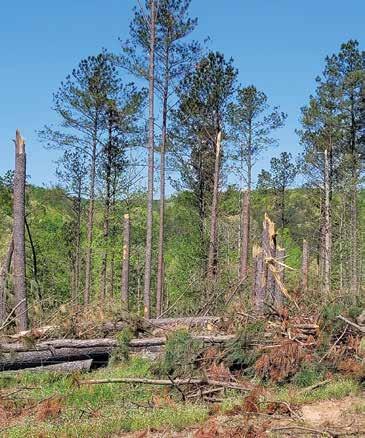
IMPROVEMENT HARVEST
This type of intermediate harvest is designed to free good trees, which have grown beyond the sapling stage, from the competition of the older or less desirable overstory trees. Improvement cuttings are most often applied to stands of irregular age distribution and are often conducted simultaneously with a true thin or reproduction harvest. While they are rare in the South, they are sometimes used to rehabilitate a stand to make it more productive.
SALVAGE/SANITATION HARVEST
Salvage and sanitation harvests are made for the primary purpose of removing trees that have been or are in imminent danger of being killed or damaged by injurious agents such as pests. Using the salvage harvest, a landowner attempts to salvage the value of trees that would be lost. Therefore, the trees removed
are of commercial size and the landowner salvages at least a portion of their value. Under a sanitation cutting, trees are eliminated that have been attacked or are in imminent danger of being attacked to prevent pests from spreading to other trees. A sanitation harvest differs from a salvage harvest primarily in that it is not necessarily confined to the removal of merchantable trees.
CONCLUSION
Intermediate harvesting can be a valuable tool to help landowners achieve their forest management objectives. When properly applied, thinnings, improvement harvests, and salvage/sanitation harvests can be used to improve existing forest stands. As with most forest management activities, the advice of a reputable resource professional should be sought before harvesting efforts are initiated.
Reference
Smith, David M., The Practice of Silviculture: 8th Edition. New York: John Wiley & Sons, 1986.
October / November 2023 45
This pine stand in Marion County, Alabama was damaged by a tornado in March of this year. The landowner salvaged the damaged trees but had to include some of the un-damaged trees to attract a buyer.
This landowner in Lauderdale County had an infestation of deodar weevil. Both the infested and dead timber were removed in a sanitation harvest to control the pest.
HARVEST
Bay watched intently as Hannah worked the soil with her hands. Dark and rich, the soil looked more like river spoil than anything. River spoil, that is, is the term I give to the dark black soil I usually find in the Conecuh River flood plains. Moist and rich, this soil is the result of

hundreds of years of flooding and decomposition… and “I believe you could plant popsicle sticks in this dirt and grow pine trees.” Or at least, that’s what I told Bay—my oldest daughter—as she studied Hannah’s every move.
A year earlier, we had moved from the
SHEPHERDING OUTDOORS
BY WALT MERRELL 46 Cooperative Farming News
well-established yard and gardens of our home to a house closer to Hannah’s mother. A widow now, Brenda deserved to have us look after her for a change. George, Hannah’s father, had passed away a year earlier. Hannah and I had done our best to manage our own family and tend to her mother’s needs, too… but the task was proving difficult. Not because we minded trimming an occasional limb or fixing rotten boards or leaky faucets at Brenda’s house, but because the art of managing two functioning households is tricky at best… especially when you have three growing girls.
And, as with any family, moving can cause things to go topsy turvy. We anticipated most of the problems… change of address forms and getting Lincoln, our black and tan hound, to stay at the new house and not journey over the river and through the woods, back to the old house… but one thing we didn’t really consider was the garden and the plants. Well, Hannah might have considered it in all of our contemplations, but, like any good husband… it never crossed my mind.
“I want you to get me one of those big tubs so I can make a raised bed for my garden,” Hannah declared.
It was already spring, and I was sure we had seen the last frost of the year. We’d been so busy with the move and the adjustment period that always follows…

the leaving work and forgetting you moved and driving to the wrong house; the putting the wrong return address on all the bills; the telling people to stop by for a visit only to have them tell you “nobody was home” because they went to your old house… we were dealing with all of those adjustments and, honestly, I hadn’t even considered a garden. I was just happy to have the last of the boxes unpacked and actually know which drawer my underwear was in.
“You mean like some of those galvanized wash tubs?” My question was sincere. I didn’t know what she was talking about.
“Yes, but bigger,” she responded.
My mind searched the various options. My dad always used cast iron bathtubs for all of his water troughs. “You mean like a bathtub,” I suggested.
“No, not a bathtub. Bigger.” Her reply was as much a challenge to my ability as it was a criticism of my lack of understanding.
“Look, the only options bigger than a washtub are a bathtub—or a watering trough about the same size as a bathtub—and a swimming pool. We are not getting a swimming pool so you can fill it with dirt.” She could tell I was growing frustrated with the notion....
“People do make swimming pools out of them. But I think they are for watering cows and such. It’s not a pool,” she explained. One thing led to another,

October / November 2023 47
and eventually I bought a big, galvanized feed trough from a nice lady on Facebook Marketplace.
Nearly ten feet in diameter, it seemed brand spankin’ new, and I was proud as a pig in a poke that I bought it for half of what a new one would cost. I slid it off the rails of the trailer—it was wider than the trailer itself—and it plopped down onto the barren dirt patch right where Hannah wanted it. She grinned from ear to ear with excitement. I brimmed with pride at the idea that I had made my wife this happy with a “big ole bucket.”
“This is perfect,” she said with glee… just before she picked my ax up and wacked a big hole straight through the bottom of the tub! I was in shock. I was so busy unloading this pristine trough that I hadn’t noticed the ax laying nearby. “Whack!” She drove another hole through the bottom…. “Waaaaiiittt!” I hollered.
She rested the ax on her shoulder as if I was inconveniencing her and said, “Why?” I stuttered in disbelief… “Because it was in perfect condition!”
“Well, the water has to go somewhere…”
“Whack!”
And, so, it was… she destroyed this perfectly new feed trough….
We loaded rocks and logs and other debris—some that would decompose and some that would not—into the trough I nicknamed “Titanic,” and eventually, we went down to Cottle Creek and loaded up load after
load of that good, black, river spoil. Soon enough, all of the debris in the bottom of the trough disappeared, and a flat, black sea of dirt washed over all of it. “This is going to grow some fine vegetables,” Hannah said with great cheer in her voice.
And it has. For several years now. Squash, tomatoes, cucumbers, peppers, onions, potatoes, sage, thyme, rosemary… why, you could make a fine salad straight from that Titanic feed trough at the right time of the year. In the wintertime, she grows mustards and turnips and other wintery greens… and the harvest is always bountiful. But not because of the vegetables.
…
Bay stood just behind Hannah watching her work the soil. “You see? You wallow out a hole about as big as your two big fingers and about as deep as you can reach, and you drop it down in there. Then close it up with a pinch of your fingers.” Hannah demonstrated as she explained, dropping an onion sprig down in the hole as she went. Bay repeated what her Momma had just shown her. And one by one, they planted 25 or so onions....
“Now, let’s go cut up those seed potatoes we have.” Over the next hour, Hannah taught her about eyes and quartering potatoes and how deep the hole needed to be, and so on.
Over the years, Hannah has taught our girls much

48 Cooperative Farming News
about gardens and harvests.
Our youngest daughter Banks has become quite the budding little entrepreneur with her Zinnia business. Thousands of Zinnias of every color of the rainbow blanket a half-acre or so not too far from Hannah’s ax murdered feed trough. Every Saturday and Wednesday Banks cuts about 20 dozen and sells them at the Andalusia Farmer’s Market.

And sometimes the harvest is not for us… Cape and I enjoy watching the deer eat the pears from underneath the trees in the orchard. We love eating those soft, sweet pears, too. Sometimes I get aggravated with the deer for knocking too many out of the tree… but I try to remind myself that the bounty of the harvest is plenty for all. We also love picking scuppernongs when the time is right. The juicy golden bulbs of sweet nectar just pop in your mouth like water balloons. We sift the seeds with our teeth and spit them right under the vines. We eat ‘till our bellies hurt and then we eat some more!
But the pears and scuppernongs, and the tomatoes, squash, peppers and potatoes are only part of the harvest. Truth is… we may not live to see the seeds planted in these years fully grown. Oh, I don’t plan on Hannah and I leaving this world anytime soon, but I don’t know how long it will be before Bay or Cape or Banks have families of their own, and they
start planting gardens with their children. And that… is the real harvest. That’s when the seeds Hannah planted in our girls will have finally taken root and grown and produced fruit of its own. Not fruit on the vines of green… but fruit in the vines of life.
One day, Bay will dig her fingers down into some dark black soil in her own back yard and look at her daughter and say, “My momma taught me that this was good dirt.” And it is…

And what makes this harvest season so very special? Well, it might be that Titanic feed trough. Or it could be those sweet pears. But to me… it’s watching Brenda get to enjoy seeing the seeds she planted in Hannah so many years ago, finally produce fruit, too.
And that harvest is what makes a true horn-oplenty.
Walt Merrell writes about life, family and faith. An avid hunter and outdoorsman, he enjoys time “in the woods or on the water” with his wife Hannah, and their three girls, Bay, Cape and Banks. They also manage an outdoors-based ministry called Shepherding Outdoors. Follow their adventures on Facebook, Instagram and YouTube at Shepherding Outdoors. You can email him at shepherdingoutdoors@ gmail.com.
October / November 2023 49
FARM TO SCHOOL
ALABAMA FARMERS BRINGING FOOD TO THE TABLE
 BY JESSIE SHOOK
BY JESSIE SHOOK
50 Cooperative Farming News
Taylor Hatchett of Boozer Farms has participated in the Farm to School Program for four years.
(Photo Credit: Taylor Hatchett)
For individuals so involved in agriculture, it’s hard to imagine a world where there is such a divide between farm to table. Does the next generation know where their food comes from?
Alabama is helping bridge that divide by offering schools the opportunity to participate in a Farm to School Program. “The Farm to School Program is a program that was started on a national level,” said Beth Spratt, Alabama’s Farm to School coordinator. “The focus of Farm to School is nutrition and agriculture education, school gardening, and local procurement. At the Alabama Department of Agriculture, we focus on the education and local procurement pieces of the puzzle.”
The main purpose of this program is for children to learn about, try and eat more local foods that they may not have been exposed to otherwise. “It is key for students to know where their food comes from for many reasons,” Spratt explained. “One of those reasons is to know that it doesn’t just come from the grocery store, that someone had to grow or produce it before it got to the grocery store. It is also important to know how far the food traveled before it got to their plate because that can speak to how ripe or unripe the product was picked or if the nutritional content is higher. All of this helps speak to
the healthiness of the foods they are putting in their bodies to fuel their minds.”
Boozer Farms, located in Thorsby, Alabama, has participated in the Farm to School Program for four years. “I love knowing that the fruits and vegetables


October / November 2023 51
Several staff members from Fairfield City Schools Child Nutrition Program visiting Boozer Farms. (Photo Credit: Alabama’s Farm to School Program.)
Student enjoying lunch fresh from Alabama! (Photo Credit: Alabama’s Farm to School Program.)
we produce are able to be enjoyed by children in our community and neighboring communities,” said Taylor Hatchett, owner of Boozer Farms. “From a business perspective, it is wonderful to have large volume sales that are close to home.”
This program creates a new market for Alabama farmers and a local fresh option for school cafeterias. “We constantly introduce farmers to school food service directors to make those connections,” Spratt said. “We ultimately incentivize the schools for serving local items … making it more feasible and enticing for them to do.”


Each individual school decides if they would like to participate in the program and the Alabama Department of Agriculture and Industries serves as the coordinator. They facilitate the exchange of information and connect schools to local food. “The school can have a direct relationship with the farmer or the farmer can work with the school’s distributor,” Spratt explained.
Boozer Farms supplies peaches, strawberries, cantaloupes, persimmons and cherry tomatoes to schools. She explained how seamless the farm to school process is. “The great thing about the Farm
to School Program is that you can identify needs before a crop is even planted. This allows you to plan and plant according to what the schools want, which from a sustainable business approach is ideal. We identify the crop or crops needed as well as volume and once it is harvested and packed, I deliver it directly to the schools or to a distributor who handles
52 Cooperative Farming News
Commissioner Pate enjoying lunch with students from DAR Elementary School in Marshall County. (Photo Credit: Alabama’s Farm to School Program.)
Larry LouAllen of LouAllen Farms and Commissioner Pate. (Photo Credit: Alabama’s Farm to School Program.)
the individual deliveries.”
The program also offers schools learning material for students to learn more about where their food comes from. “We have created materials for schools to use in the classroom that focuses on a different product being harvested in Alabama each month,” Spratt said. “This resource follows the common core teaching standards that teachers can use in the classroom.”
Additionally, Boozer Farms has given farm tours to cafeteria staff because she believes it is important for the adults to understand the important of sourcing locally. “Often times it requires a little more work to prepare fresh local fruits and vegetables compared to processed/canned/frozen items,” Hatchett explained. “The staff that prepares the food should know why the extra work they may do is so valuable. The farm tours are an opportunity for me share the importance of supporting local farms and gives me a chance to personally thank them for all they do to make the Farm to School Program such a success!”
The Farm to School Program is constantly

growing with more schools buying in every year with more success stories. “I think anytime a child tries something new with an open mind is a success story. We know most kids like watermelon and strawberries, but what about kiwi or persimmons. Getting them to try those items is definitely a win!”

October / November 2023 53
Students participating in a school garden. (Photo Credit: Alabama’s Farm to School Program.)
CUZZ’S TRAVEL
BY CAROLYN DRINKARD
Cuzz’s Travel Depot on Highway 43, south of Thomasville, is the perfect stop for travelers. Whether you’re heading south to Alabama’s beautiful beaches, north to Tuscaloosa or Montgomery, westward to Meridian or eastward to Andalusia, Cuzz’s Travel Depot is “in the middle of everywhere," so it’s the ideal resting place for those wishing to refill and refresh.
Cuzz’s Travel Depot started to welcome visitors on October 1, 2022, and from the beginning, everyone realized that this was no ordinary convenience store. In fact, in one short year, Cuzz’s Travel Depot has redefined the concept of “c-store” to become a travel destination, popular with both locals and out-of-towners.
Cuzz’s Travel Depot is a subsidiary of Dozier Oil Company, the second oldest family-owned business in Thomasville. In 1955, Edward Vaiden, Frank and Jack Dozier started the business and incorporated it in 1956. As a full-service filling station, Dozier Oil quickly became popular for using the personal touch

to serve customers.
In 1969, Ed Vaiden Dozier became the sole owner of Dozier Oil Company. His son, Mark Dozier, worked in the business and took over in 2006. Mark changed the name of the popular Thomasville gas station to “Cuzz’s Phillips 66”, a tribute to his late father, who was well known for calling everybody “Cuzz." For
 Cuzz’s Travel Depot offers a little bit of everything you need to refill and refresh. A wide selection of grocery items are available.
Cuzz’s Travel Depot offers a little bit of everything you need to refill and refresh. A wide selection of grocery items are available.
DEPOT
people all around Thomasville, that name also meant friendly service, excellent value and a positive customer experience.

Since taking over the business, Mark has brought in his family: wife, Sue; son, Chase; and daughter, Heather Dozier Scott. He has also added two more locations: Cuzz’s Highway 10 in Butler, AL; and the newest addition, Cuzz’s Travel Depot, on Highway 43, south of Thomasville. All three locations are truly third-generation family businesses, carrying on the tradition of using their personal touch to serve customers better.

Part convenience store, part restaurant, part grocery store, part pharmacy, part gas station and part rest area, Cuzz’s Travel Depot is all of these, and so much more. It is also an unanticipated oasis for discovery. Just step inside, and you will be pleasantly surprised. Every nook and cranny holds something exciting, and the decor was designed or built by the talented, close-knit Dozier family.
The first thing you notice inside is a massive light fixture, hanging from the ceiling to illuminate the inte-
rior displays. Mark and Chase built this beauty, using two culvert ends, fastened with gate connections. They placed a large chandelier inside to add warmth and character. (They also constructed a similar fixture in the Country Kitchen area.) Separating the “Suds and Sodas” section is an old planter barrel, cut in half to hold the face of “Buddy,” Mark and Sue’s beloved dachshund. The “Filling Station” sports an antique gas nozzle and hose from one of the original pumps at Dozier Oil Company. Sue and Heather designed and painted this delightful area with bold, bright colors and its own coffee-bean wall.
Expect the unexpected at Cuzz’s Travel Depot. For example, a large, fully connected conference room is here to hold meetings. While most C-stores do not carry fashionable retail items, Cuzz’s Depot does. After Heather Scott displayed trendy cups, bags, hats and jewelry in an eye-catching way, she turned to social media to get the word out. Now, her “small-scale gift shop” has became a success. Customers flock to Cuzz’s Travel Depot to get anything they need in a flash.
“If they ask for it, we try to get it,” Heather explained. “It’s convenient to pick up, and people like that!”
Another popular draw has been Heather’s candy carousel. Using antique candy jars, Heather sparked a dose of nostalgia when she transformed a traditional candy counter into a cutting-edge delight, featuring
Cuzz’s Travel Depot sits along Highway 43, just south of Thomasville. It opened on October 1, 2022, and in one year, it has broken the mold for a convenience store and become a destination stop for travelers. (Photo Credit: Johnny Autrey)
The Dozier family owns Cuzz’s Travel Depot, and they work together in this third-generation business. They designed and built most of the decor inside the store. (Front, l to r) Sue Dozier, Mark Dozier (Back) Heather Dozier Scott, Chase Dozier.
old-timey sweet treats and vintage toys.
There’s so much to check out here, but their food has been the talk of the town. When the Dozier family hired Hazel Burge to manage Cuzz’s Travel Depot, Hazel suggested they make Cuzz’s Country Kitchen into a restaurant, serving down home, country Southern favorites, like chicken and dumplings and sweet potato casserole. One year later, Cuzz’s Country Kitchen offers 20 different daily selections. Deli favorites, such as fried chicken, livers, gizzards and potato wedges are right there each day, as well as various flavors of wings and home-baked yeast rolls. They have “Seafood Day” each Friday, with catfish, shrimp, gumbo, etoufee, jambalaya, crab cakes, oysters, crawfish bites and many more favorites. Sundays bring in large, after-church crowds for homemade meals just like your grandmother used to make. The Kitchen opens at 5:00 AM each day with breakfast and closes at 8:00 PM. Guests have the option to dine in a spacious dining area or take out.
Cuzz’s Country Kitchen has other surprises, too. Hazel and her staff have turned the Kitchen into an excellent bakery, preparing custom-made, decorated cakes and cupcakes. They also create all kinds of party platters, dips and other tasty

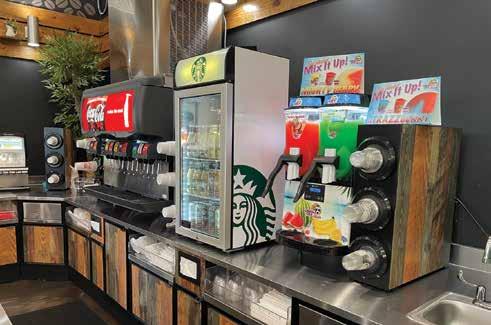
treats for special occasions.
For those in a hurry, food choices are unlimited. The “Open-Air Island” presents a variety of quick-pick homemade treats and snacks, sandwiches and salads, prepared daily at Cuzz’s Kitchen and replenished three times a day for freshness. Homemade pizzas are available 24-7. The “Filling Station” offers freshbrewed coffee, tea, fountain drinks, slushies and 40 different varieties of smoothies. During colder temperatures, guests can grab a cup of homemade soup, chili or “swamp stew," a local favorite.
56 Cooperative Farming News
Cuzz’s Travel Depot offers travelers all kinds of drinks, from sodas to slushies to smoothies. There’s something to suit every taste here.
Cuzz’s Country Kitchen serves delicious Southern favorites, like mac and cheese, fried green tomatoes, sweet potato fries and many other specialties.
Cuzz’s Travel Depot has easy access and ample parking. A large pet relief area is convenient for anyone traveling with fur babies. They offer clean, spacious restrooms and shower areas with full shower packs.
Cuzz’s Travel Depot has 26 fuel dispensers with all grades of gasoline. A full range of oil products are offered, as well as electric vehicle chargers. Amenities, like air stations and bulk ice, add to any traveler’s comfort and convenience. Cuzz’s Travel Depot accepts all credit cards, including the Phillips 66 card, which offers discounts on fuel each quarter. Their own Cuzz’s card is also available.
In a clean, thoughtfully designed environment that is welcoming and pleasant to visit, Cuzz’s Travel Depot is an experience you won’t soon forget. The Doziers guarantee that once you visit, you will definitely come back.
“We cater to our customers,” Mark said. “We want people to feel comfortable enough to come here and get whatever they want!”
This third-generation family business has not only broken the mold for C-stores, it has also raised


the bar for customer convenience, care and contentment. The future looks bright as Cuzz’s Travel Depot plans to expand and further enhance the Dozier family’s tradition of using the personal touch to serve customers better.

October / November 2023 57
When you step inside Cuzz’s, the first thing you notice is a massive light fixture, hanging from the ceiling to illuminate the interior displays. Mark and Chase built this beauty, using two culvert ends, fastened with gate connections. They placed a large chandelier inside to add warmth and character.
Hazel Burge is the Manager of Cuzz’s Travel Depot. An excellent cook, she convinced the Dozier family to make Cuzz’s Country Kitchen into a family restaurant serving homemade southern favorites. Each day, Hazel posts a menu with 20 different selections.
Sue Dozier and Heather Dozier Scott designed and painted the “Filling Station” area, which features an antique nozzle and hose from the original Dozier Oil Company.
Through diversity and strong leadership, Alabama Farmers Cooperative, Inc. has grown to become one of the largest farmer owned agriculture related businesses in the Southeast.


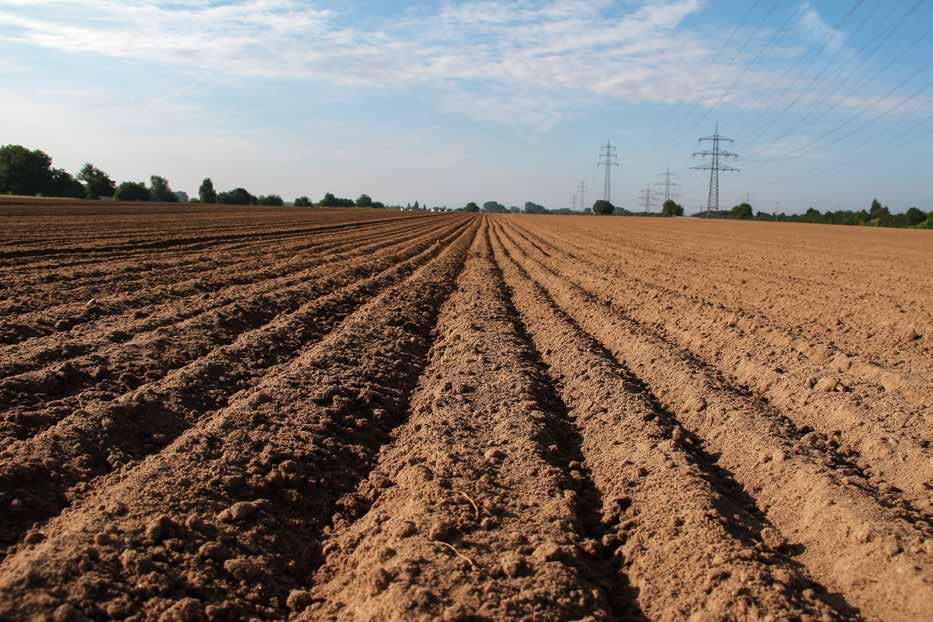



/ALAFARM


VISION
To be a relationship driven partner integrating vital resources to ensure our members/farmers success.
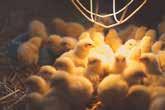
58 Cooperative Farming News
@ALAFARM_COOP WWW.ALAFARM.COM
BY LOIS TRIGG CHAPLIN

DON’T FORGET THE SPINACH!
Spinach doesn’t like heat, but the mild days of fall are perfect to encourage new growth. The easiest way to start spinach is to set out Bonnie transplants because spinach is notoriously tricky from seed. Seed is slow to sprout and germination rate is lower than many other crops. If you do start from seed, use fresh. They do best. Soak overnight to speed germination. In North Alabama, cover plants with a row cover or cold frame to encourage plenty of growth as the weather cools. Once established, plants withstand frosts down to about 20 degrees. Growth may be slow as the days get shorter, but plants will take off as the days begin to lengthen again for a bountiful winter and early spring crop.

TROPICALS GO BACK IN
Those houseplants outside for the summer will appreciate a little TLC as they go back indoors before frost. First trim off dead or damaged leaves and stems. Most plants will need a good shower to rinse dust and grime from their leaves. The big leaves of spathiphyllum and fiddle leaf fig shine up nicely with a soft cloth. Wipe the pots to prepare them for table tops again, and clean out the saucers. Sounds gross, but I always check the bottoms of pots and the underside saucers for slugs, snails, and roach eggs. Also
 Move houseplants indoors before frost threatens.
Fresh spinach is a winter treat.
Move houseplants indoors before frost threatens.
Fresh spinach is a winter treat.
be sure to inspect very carefully for aphids, mites, or scale, three of the most common houseplant pests. Treat those plants and then isolate them indoors to prevent the pests from spreading to other plants. To make watering through winter more convenient, group the plants when possible.
SUCH A PRETTY HARVEST
Roll out the wheelbarrow for the last harvest before frost because it is always more than you think. Picking warm season plants clean makes for a big harvest and enough to make green tomato jelly, pepper jelly, and the like. It’s also a good time to make final summer garden notes about specific varieties, timing of pest or disease outbreaks, and other things that are important to keep up with the garden over the years. I also make my wish list for next year for needs such as a seed starting mix, sprinkler, replacement tomato stakes, garden snips, etc. These make good answers when a loved one asks for Christmas gift ideas.

WINTER LESSONS
I’m remembering the Christmas freeze from last year as I sow lettuce seeds for this fall and winter. Three continuous days below freezing and two nights below ten degrees was a test for the plants. And me! Fortunately, we had planted some of our lettuce in double-walled polycarbonate cold frames. By covering the cold frames with the additional protection of a frost cloth we were able to protect everything inside— lettuces, kale, fennel, parsley, and cilantro. Plants under a low tunnel did not fare as well, even with a double cover of Agribon-30 frost cloth and a sheet of plastic. A few varieties made it, so they are now regulars for fall planting; these are Rouxai, Tango, and Landis Winter lettuces. I also piled pine straw over each of the Bonnie celery plants deeply enough to hide the young, 8-inch-tall plants completely. They showed some superficial damage to the leaves, but the crown and stalks were fine. So this winter, I am prepared with more pine straw, an extra cold frame, and the same successful varieties.

HARVEST FLOWER SEED
Fall is a good time to harvest seeds of favorite summer flowering annuals and perennials. Zinnia, annual and perennial sunflowers, tickseed, cosmos, cleome, and coneflowers are good examples. Pick the seed pods or seeds when they are dry, not when wet from dew or rain. You can store them in a paper bag for a while to be sure that they completely dry then transfer to a glass canning jar. I keep a silicone packet in each to help keep the air inside the jar dry. Store in a cool, dark, dry place.

60 Cooperative Farming News
The last pickings before frost often yield a surprising amount.
Tickseed (Bidens sp.) will produce many seeds to share
A little work to shield lettuce from cold pays big dividends
BY JOHN HOWLE
WAS IT WORTH IT?

“What lies behind us and what lies ahead of us are tiny matters compared to what lives within us.”
Henry David Thoreau
This is a truly satisfying time of year if you’ve got hay in the barn, summer’s canning on the shelves, and plenty of meat in the freezer. The weather is cooling down, and maybe you’ve already began eating that frozen corn you put up a couple of months ago. The memories of a hot, muggy summer are replaced with the earthy smells of fall and the cooler mornings.
It’s nice to take an occasional break from the hard work of the farm and celebrate fall harvests, fresh pumpkins, and county fairs. However, as you begin to eat the fruits of your labor from summer, you may ask yourself, was it worth it? – All the hard work planting, tending, picking, and canning your own vegetables? The efforts might even cost you more than simply buying metal cans

October / November 2023 61
of food for your cabinets. Even if the home-canned foods cost you more, it is truly amazing how many more nutrients are found in home-raised vegetables as opposed to commercially grown vegetables.
Teddy Gentry, of the group Alabama, and Dr. Allen Williams wrote a book called, "Before You Have a Cow." In this book, they showcase the importance of cow selection and forage management. But the thing that caught my eye was in Chapter One where the authors talk about the commercial production of fruit, vegetables, and grain that relies on “heavy application of chemical fertilizer, pesticides, herbicides, fungicides, and even fumigants.” They state in Chapter One that there has been a significant decline in the nutritional value of what we eat, and that today, the food is grown faster and in larger numbers.

The diagram in the book shows the difference in nutritional value between commercially produced green beans and green beans grown in a home garden without chemical inputs. The USDA column shows what the USDA recommends as a nutrient value for each nutrient element. There is also a column showing what green beans in a store contain, and another column showing the nutrient levels of a home garden.

For instance, magnesium is a nutrient found in green beans. The USDA requires that there be 25 mg
in a percent of our daily diet. A typical grocery store can of green beans has 30 mg, and a home garden has 50 mg.
For zinc, the USDA recommends 0.2 mg, grocery store beans are .72 mg and home garden beans are 2.3 mg. All the nutrient level numbers for the home garden were dramatically higher than the USDA recommended amount or the grocery store amounts. So to answer the question, “Is a home garden
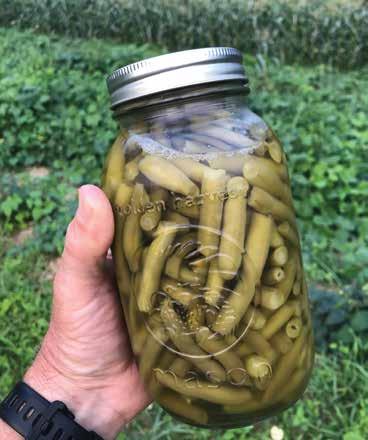
62 Cooperative Farming News
Raising your own home-grown beans gives you much more nutrients than store bought beans.
Check out “Before You Have a Cow” by Teddy Gentry and Dr. Allen Williams. You can order one through www.understandingag.com.
This nutrient chart shows the difference in commercially raised beans, grocery store beans, and home-grown beans.
worth the extra time, money, and effort? The answer is yes. Not only are you getting higher nutrient levels, but you are also getting great exercise and being in nature working in harmony with God’s creation.
Now that the harvest is in, hopefully you can take some time to get out and enjoy the outdoors in a relaxing way. Deer hunting is one of my favorite activities during the harvest season. It’s even better if you harvest a deer. Deer meat is another healthy option for protein in the family’s diet. Every hunter who has harvested a buck or doe feels a sense of accomplishment thinking, “You know if things got really bad, I could just hunt for my food and be able to survive.”
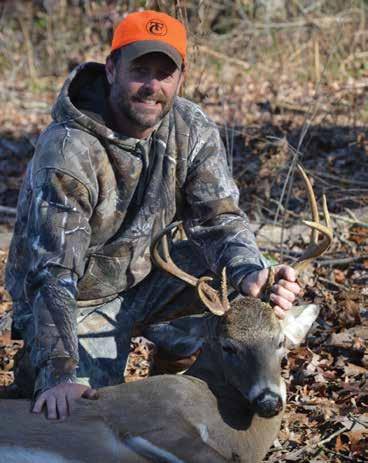
Before you put all your canning equipment away for the year, consider canning deer meat. Simply cut your meat up into one-inch squares, pack it into quart glass canning jars adding no water, add a teaspoon of canning salt, and pressure can the meat for 90 minutes at 11 pounds of pressure. You can follow general canning guidelines for meat to successfully can your deer meat.
It’s always better to share the hunt with someone. Maybe it’s your daughter, son, or another youngster who has never been deer hunting. One of the most important things to remember when taking youth on

a hunt is comfort. No one likes to shiver and shake because of the cold if he or she is a newcomer to hunting.
This makes it worthwhile to build a hunting stand or some other enclosed hunting blind that will allow you to bring a portable heater into the hunting quarters. Make sure that the youth sees you turn the phone off and learns to observe and learn from nature. If you bring a video game into the stand just to appease the youngster during the hunt, you’ve already lost the point of being in the outdoors unplugged from all the digital bombardment.
Finally, teach the youngster to only take an ethical, safe shot at a deer, and follow all laws and regulations of your area. We all hears stories of folks spotlighting for deer, hunting while trespassing, and doing all sorts of unethical behavior in search of the big buck. Let the child learn from you that an ethical harvest of a fine deer brings a higher sense of accomplishment than a deer taken unethically or illegally.
During this autumn of harvest, remember to be thankful for what you have, and content wherever you are. As Philippians 4:11 states, “I am not saying this because I am in need, for I have learned to be content whatever the circumstances.”
October / November 2023 63
Follow rules and regulations, and there is more satisfaction when you do harvest a good deer.
Remember creature comforts when exposing someone new to deer hunting. Keep the hunt comfortable.
CELEBRATE THE BOUNTY
A FESTIVE FALL HARVEST
 BY BETHANY O’REAR
BY BETHANY O’REAR
MAGIC OF GARDENING
64 Cooperative Farming News
As the cooler nights begin to creep in and the leaves don their autumn hues, there is something magical about this time of year in Alabama. From pumpkin carving and hayrides to county fairs and football games, this cool-weather season also brings a burst of new flavors from the garden – just in time for all of our favorite holidays!
With nature’s palette changing, now is the time we begin to reap the rewards of a late summer/early fall planting. Depending on the variety planted, you may be receiving the first bounty of some fall favorites – cabbage, broccoli and cauliflower. These vegetables will continue to produce throughout the fall, even withstanding a light freeze. Broccoli and cauliflower heads (in the case of cauliflower, the head is actually called a curd) should be harvested when they reach 6” or so. For cabbage, mature size at harvest will depend on specific variety. Just be sure to select cabbage heads that are firm, as these will store well in the refrigerator for up to a month or more.
Our favorite leafy greens – collards, kale, Swiss
chard and spinach – are ready to be gathered this time of year as well. To prolong your bounty, harvest the outer leaves while the plant continues to grow. Just keep an eye on the weather. Some of these vegetables can withstand a light to medium freeze, while others are a little more vulnerable to sub-freezing temperatures.

Radishes should be poking their heads up in early/ mid-October. They do best in cool weather with plenty of moisture. Under these conditions, they tend to grow rapidly, producing crisp, tender roots. Be sure to harvest them before they become overly mature and bitter.
Carrots and turnips can be left in the garden under a one-foot-deep layer of mulch (to protect against any freeze) and dug as needed all winter. Root crops that are not protected with a layer of mulch should be harvested before the ground freezes.
The symbol of the season – pumpkins – are best harvested on a sunny and dry day, reducing the chances of mold and mildew affecting the fruit. Be sure to pick pumpkins before the first hard frost, as this may damage them and decrease the success of long-term storage. Pumpkins should be handled with care to avoid damaging the skin, stem, and outer rind. The fruit can be stored for 2-3 months if cured and held at 50-55 degrees with good air circulation. Curing involves elevating storage temperatures to 80 to 85 degrees F with 75-80% relative humidity for 10 days. This process heals wounds, helps ripen immature fruit,

October / November 2023 65
enhances color, and ensures a longer post-harvest life. After curing, reduce temperature and relative humidity. Make sure your pumpkins are completely mature and free from injury and decay when stored.
Speaking of pumpkins, Halloween is the traditional time to plant garlic, both because conditions tend to be right, and, according to folktales, garlic is a potent vampire repellent! Tuck garlic cloves 2-3” deep in well-drained soil and space 6” apart. The shoots will emerge by Thanksgiving, with bulbs ready to harvest in May or June. If you plant a hard-neck type (versus a soft-neck), don’t forget to harvest the scapes in spring— garlic scapes are incredibly tasty, and picking them will help each plant devote energy into a nice, plump head of garlic, instead of into the flower. Once garlic leaves start to brown, your bulbs are ready to harvest and dry for year-round use. Make garlic planting a Halloween tradition and get ready for some scary good cooking next summer!
While planting garlic cloves in your edible garden around Halloween, keep in mind that late November is the perfect time to also tuck some daffodils into your perennial gardens. These bulbs require a period of exposure to cold before blooming, so planting now allows them ample preparation for their spring show. Try incorporating bulbs into perennial plantings and ornamental borders in clusters of at least ten bulbs each for the greatest visual impact. When layered into a perennial landscape, the bulb display will add early season interest while most perennials remain dormant; as the bulbs fade, the perennials will fill in their space!

It is worth remembering that a little time spent in the garden now will pay dividends over the coming months. Seeds from non-hybrid plants can be saved from the garden for planting next year. Thoroughly dry seeds, label them, and store them in a closed jar in a cool, dry place. Continue to add those falling leaves and yard clippings to your compost piles and freshen up your mulch layer to protect your plants from chilly nights.
As the autumn sun sets on our thriving gardens and the last of the fall vegetables make their way to our kitchens, we are often left with hearts of gratitude and satisfaction. As gardeners we’ve nurtured the earth, and in return, it has nourished us. So, let us cherish these moments, and carry the spirit of gratitude throughout the rest of the year. We may be approaching the quieter season of the garden, but we know it will soon be roaring back to life in no time.

66 Cooperative Farming News
LAWN & GARDEN CHECKLIST
October Garden Checklist
Fruits and Nuts
• Planting season for strawberries starts in South Alabama.
• Clean up orchard area.
• Remove broken limbs, old fruit, and debris from orchard floor.
Shrubs
• Plant new trees and shrubs in the landscape.
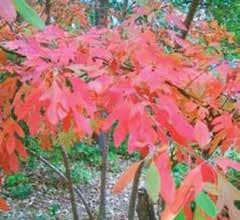
• Water when needed.
• Note varieties of camellias and other landscape plants in bloom.
• Start mulching all shrubs that do not have a mulch.
Lawns
• Perform a soil test to determine if limestone is recommended and apply anytime this fall.
• If winter or spring weeds were a concern this year, apply preemergent herbicides.
• Fertilize fescue lawns at 1 pound slow-release nitrogen per 1,000 square feet.
• As fall rain returns, monitor for fungal disease in fescue.
Roses
• Continue insect and disease control practices.
• New rose catalogs will be coming in.
• Study closely; add some new varieties to your list.
Annuals and Perennials
• Visit flower shows and gardens.
• List desirable varieties of mums.
• Clean up flower beds immediately after first killing frost. Plant half-hardy annuals, such as snapdragons.
Bulbs
• Plant tulip, hyacinth, daffodil, crocus, Dutch iris, anemone, and ranunculus.
• Watch planting depth
• Dig caladiums; clean and store in a warm place.
Miscellaneous
• Renew mulch around shrubs and rose beds.
• Loosen mulches that have packed down.
• Spray with oils before freezing weather to kill scale, mites, etc.
• Remove all dead stems and trash from flower beds.
• Transplant into small pots any cuttings taken earlier.
Vegetable Seeds
• South: This is the last fall month to plant the winter garden. Plant carrots, collards, kale, mustard, onion seeds, radishes, spinach, and turnips. Plant Swiss chard in early October.
• Central and South: Continue planting winter-hardy crops such as beets, carrots, collards, kale, parsley, and spinach.
• North: Plant onion seeds and radishes in early October.

Vegetable Transplants
• Whole state: Continue planting winter-hardy transplants.
• Soil test garden soil and apply limestone as recommended anytime this fall.
November Garden Checklist
Fruits and Nuts
• Select sites for plantings.
• Start mulching strawberries, blackberries, and grapes.
Shrubs
• Plant shrubs, trees, and vines.
Lawns
• Perform a soil test to determine if limestone is recommended and apply anytime this fall.
• Fertilize fescue lawns at 1 pound slow-release nitrogen per 1,000 square feet.
• As fall rain returns, monitor for fungal disease in fescue.
Roses
• Get rose planting underway.
• Use a soil test as a basis for fertilization.
• Look for new varieties.
Annuals and Perennials
• Plant hardy annuals such as larkspur, poppies, pansies, bugloss, candytuft, and ornamental cabbage and kale.
• Get sweet peas into the ground.
Bulbs
• Continue spring bulb planting.
• Put lilies of the valley in a shady place.
Miscellaneous
• Plant screen plantings for privacy on the patio.
Vegetables
• Use cold frames for tender, cool-season vegetables such as broccoli, cabbage, cauliflower, Swiss chard, lettuce, mustard, onions, radishes, and turnips.
Questions?
Call the Master Gardener Helpline at (877) 252-4769. A Master Gardener Extension volunteer is waiting to answer your call.
See other months from Alabama Gardener’s Calendar at www.aces.edu.
October / November 2023 67
The Lawn and Garden Checklist is provided by the Alabama Cooperative Extension System.
BY SUZY M c CRAY
CHICKEN MATH
I’ve never been good at math.

From Junior High when I first became somewhat acquainted with algebra to college where I had to take one semester of math to keep my scholarship and later to graduate, math has truly been my nemesis.
The now-late Jerry Sterling evidently didn’t think it was important to explain chicken math to me when he helped me obtain my first 25 Golden Comets through the Blount County Co-op in the year 2000. As manager there then, he was certainly always aware of whatever was going on and I wonder why he didn’t notice that I was already succumbing to the throes of chicken math
when that very next week after getting the 25 chicks, I went back and asked him to help me get five little “Easter Eggers.’”
He was so helpful with instructions and information! But surely he noticed chicken math was beginning to overtake me when I made regular trips back to the Co-op not only after bags of chick starter and later laying pellets, but also additional waterers and more!
By the time Mack arrived here on the farm a few years ago, I had more than 450 laying hens, an assortment of roosters, about 30 ducks, 15 Guineas, seven turkeys, 35 Angora rabbits and 11 goats.
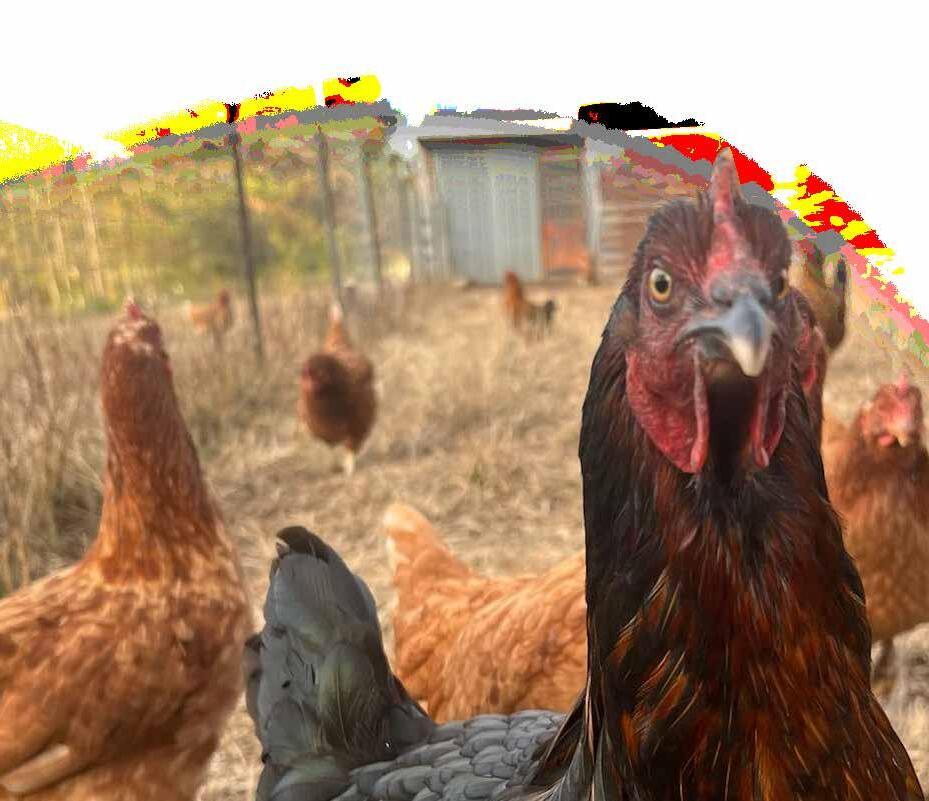
He didn’t truly understand chicken math at that time but began to help me get it all under control by selling some roosters and us not replacing other critters as they passed away.
By the year 2020 when COVID came to call, we were rocking right along at a pretty normal pace, or so we thought.
I have never ordered from a place called Meyer Hatchery but they have a very informative website. An article there explains “how the math works.”
“Perhaps you planned to have six birds but now somehow have 14, 22, 30. Or maybe you planned to only have chickens but have mastered ADVANCED CHICKEN MATH and now have ducks, rabbits and a cow! My personal theory on chicken math is not only are chickens a lot of fun to keep, they are relatively low maintenance and do not take up much space, so it becomes very easy to say, 'What difference would a few more make?'"
So back in the winter, we were not getting enough eggs from our older girls to furnish the golden orbs to our farm store customers. So, I’d just order 25 more chicks through my usual hatchery, and we’d go from there.
Nope. Not that easy. Seems everybody and his brother also decided they wanted chickens for egg laying as well.
Where I could usually place an order in January and receive newly hatched baby chicks by early February at the latest, this year, with all the food scares, and supply chain issues, my 25 Golden Comet/Red Sex link chicks wouldn’t be available til THE LAST WEEK IN MAY!
So I placed my order and vowed to wait. After all, what was four or five more months.
BUT THEN I found another hatchery closer which was recommended by several folks I dealt with at our local Co-op. I called them, and I couldn’t have February babies, but I could have 25 Isa Brown chicks in March, so I ordered them.
Those March chicks arrived and were promptly placed in a playpen in the soap making room of our house, under a brand-new heat lamp purchased at the Co-op (along with several other heat bulbs “just in case” I broke one).
But here’s where chicken math began to rear its head.
Mack loves his Guineas. He began finding Guinea nests of eggs and placed those eggs under broody hens who were more than willing to cooperate. Mack doesn’t like using the incubator and the mama hens just love to raise those babies.
He tried to keep the keets in a brooder separate from the baby chicks, but chicken math had some
surprises for us. Evidently, when he’d place the Guiana eggs under the hen, there’d be a few chicken eggs as well. So, when he’d gather the baby keets, there would be a few yellow fluffy chicks in each nest!
He put several of those in with the chicks we ordered and everybody did well together.
Because of a farm accident and some other health problems, I asked Mack if we should cancel the May chick order. I should have been thinking of chicken math, but we didn’t.
He said no, we’d be fine by May. When those 27 chicks arrived, the March chicks were ready to go into the separate room in the barn, separated only from the grown chickens by a chicken wire wall.
Everything seemed to be going well. Everybody had a place. Everybody was healthy.
But just as fast as he hatched guineas and sold the little keets, more chicken chicks would hatch!
By the time the May chicks were ready to move into the special room in the barn, and the March chicks were integrated in with the older flock, there were a total of 40 baby chicks that had hatched here on the farm in ADDITION to the 27 and 27 we had ordered (they always include an additional chick or two).
So even with my math skills that seems to total 54 plus 50 which is 94. And we only set out to have 25 new chicks this spring!
AND right in the middle of all this, a happy looking Easter Egger hen began raising 14 little chicks of her own. Let’s see 94 plus 14 equals 108.
How quickly we moved from 25 to 108!

October / November 2023 69
And about all those keets! Mac’s been saving back some who are solid white or who have a lot of white in their coloring. I’m not sure how many extra of them are in the brooders in the barn….
Watching those mama hens with baby chicks can’t help but make you smile.
In at least two places in the Bible, God and Jesus use that example of hens and their young.
In Psalm 91:4 the Psalmist notes, “He shall cover thee with His feathers, and under His wings shalt thou trust.”
Then in Matthew 23: 37 Jesus Himself notes, “O Jerusalem, Jerusalem, thou that killest the prophets, and stonest them which are sent unto thee, how often would I have gathered thy children together, even as a hen gathereth her chickens under her wings, and ye would not!”
Jesus loved to give parables and examples to teach us hard-headed children important facts about His love for us all.
Maybe this year we needed this repeated message of how these hens watch over their babies, gathering them under their wings for warmth and security.

How much more secure should we feel!!!
(Suzy and husband Mack live on a homestead in Blount County, Alabama and can be reached on Face book or by email at suzy.mccray@yahoo.com)
CLAY COUNTY STOCKYARD
1050 Airport Road - Ashland, AL
Sale Every Tuesday at 12:30 p.m.
Tad and Kim Eason, Owners
Barn: 256-354-2276 Tad: 397-4428
Hauling available
Check us out on Facebook!
SAND MOUNTAIN STOCKYARD, LLC
19509 AL Hwy 68 - Crossville, AL 256-561-3434
Cattle Auction - Every Wed. & Sat. at 11:30 a.m.
Call for any hauling & catching needs
VALLEY STOCKYARD
13130 AL HWY 157 - Moulton, AL
Cattle Auction - Wed. at 11:00 a.m.
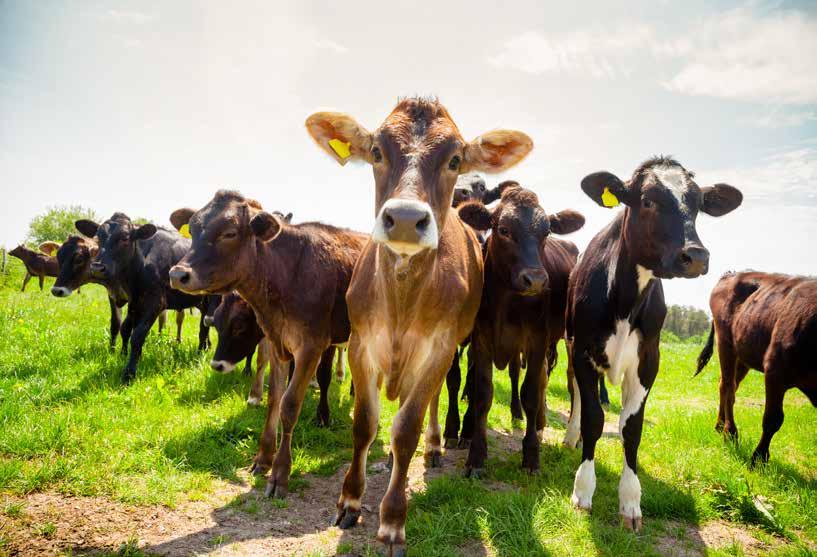
Benjy McCafferty (C) 256-740-9648
Phone: 256-974-5900
Fax: 256-974-5899
Your Full Service Stockyard
MID STATE STOCKYARDS
TOP RANKED MARKET RECEIPTS
SINCE 2006
8415 State HWY 97 South Letohatchee, AL 36047
Sale Day: Tuesday at 10:00 a.m. 1-877-334-5229 or 334-227-8000
www.midstatestockyards.com
If you would like to advertise your stockyard, please contact Wendy McFarland at mcfarlandadvantage@gmail.com
70 Cooperative Farming News




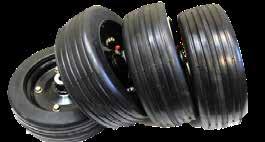
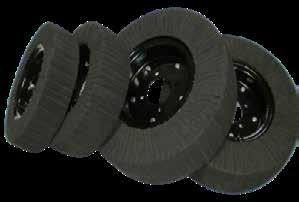

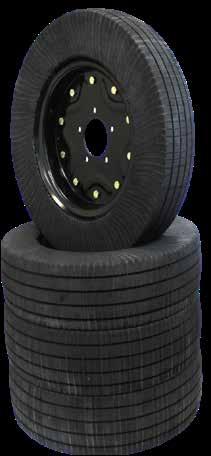
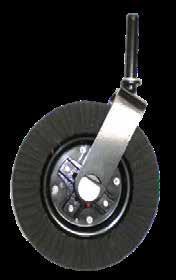







October / November 2023 71 Laminated and Solid Molded Wheels Over 30 Different Models of Tailwheels for Rotary Mowers. Call 912-330-0708 or visit www.highg r ademfg.com MADE TO REPLACE THE USED AIRCRAFT TIRE! DESIGNED TO GET THE JOB DONE. • Tired of flat tires from used Aircraft tires • The true NO Flat wheels • No more flat tires • No more foam breakdown Laminated Tires Available in: 21” - 4 bolt & 5 bolt 15” - 4 bolt pattern 10” – various busing sizes Solid Molded Tires Available in 8”, 9” and 10” diameter Finish Mower Assemblies for Most Major Brands. CHECK OUT OUR NEW WEBSITE 25.5” x 6.25” 5 Bolt Pattern 25.5» x 6.25» 4 Bolt Pattern Assemblies to Fit Almost Every Mower!!
PUMPKINS: COOKING AND PRESERVING
 BY ANGELA TREADAWAY
BY ANGELA TREADAWAY
Right now the pumpkins and winter squash are ripe and ready. Pumpkin and winter squash are a rich source of Vitamin A as well as fiber. Other nutrients you get from pumpkin include potassium, folic acid, copper, iron, and riboflavin. One cup of cooked solidly packed pumpkin/squash has only about 80 calories! While it is much easier to use canned pumpkin, you can use fresh pumpkin and squash that you have cooked and pureed for your favorite recipes. There are several varieties of winter squash available including butternut, Hubbard, turban, buttercup, acorn, banana, mammoth, sweet dumpling, and the pumpkin.
Follow these tips for easy and safe pumpkin cooking:
• Choose pumpkin or squash that has a bright-colored skin, is firm and heavy for its size, with no damaged areas. Smaller pumpkins/ squash may produce better products.
• To use, cut it in half and scoop out the seeds. Place it cut side down in a baking dish and bake in a moderate (350 degree) oven until the pulp is soft. Let it cool slightly and then scoop the flesh out of the shell. You can puree it in a blender or food processor to make a smoother product
72 Cooperative Farming News
FOOD SAFETY
and it is ready for pies, pumpkin bread, cookies or other product made with pumpkin puree.
• To freeze pumpkin, first rinse the outer rind with cold water. Then cut into cooking-size sections and remove seeds. Cook until soft in boiling water, in steam, in a pressure cooker or in an oven. Remove pulp from rind and mash. To cool, place pan containing pumpkin in cold water and stir occasionally. Package, leaving ½-inch headspace. Seal, label container and freeze. Freeze in quantities that can be used at one time, for example, enough for one or two pumpkin pies.
• Thaw pumpkin and squash in the refrigeratornot on the counter – before using.

• To can pumpkin, you must can the pumpkin in chunks. Wash the pumpkin and remove seeds. Cut into 1-inch slices and peel then cut the flesh into 1-inch cubes. Add the cubes to a saucepot of boiling water and boil for 2 minutes, do not mash or puree. Pack the hot cubes into hot jars leaving 1-inch of headspace. Fill the jar to within 1-inch of the top with boiling hot water. Remove air bubbles, wipe the jar rims, adjust the lids and process in a pressure canner at 10 pounds pressure – 55 minutes for pints and 90 minutes for quarts.
• When you are ready to use the pumpkin, drain off most of the liquid and mash or puree and use as you would commercially canned pumpkin.
• Check stored pumpkins occasionally and discard any that become soft or moldy.
Orange Date Pumpkin Muffins

1 cup whole-wheat flour
1 cup all-purpose flour
2 teaspoons baking powder
1 teaspoon baking soda
½ teaspoon salt
½ teaspoon ground cinnamon
1 large seedless orange, scrubbed and cut into 8 sections (peel left on)
1 large egg
1 large egg white
2/3 cup fresh unseasoned pumpkin puree
½ cup packed brown sugar
¼ cup honey
3 tablespoons canola oil
¾ cup pitted dates, chopped
3 tablespoons chopped walnuts or pecans
Preheat oven to 400 degrees. Coat 12 standard muffin cups with cooking spray.
Whisk flours, baking powder and soda, salt, cinnamon in a large bowl. Puree orange sections in a food processor or blender. Add egg, egg white, pumpkin, sugar, honey and oil and process until mixed good. Make a well in the center of the dry ingredients: add the wet ingredients and dates. Stir with a rubber spatula until just combined. Scoop the batter into the prepared pan and sprinkle with nuts. Bake the muffins until the tops spring back when touched lightly, approx. 18-20 minutes. Let cool in pan for 5 minutes and empty out onto wire rack to cool before serving.
October / November 2023 73
THE LITTLE GIRL AND THE CUCUMBER SEEDS
BY GREG A. LANE
Last year, in early spring, my wife and I planted a small vegetable garden in our side yard. We planted okra, cucumbers, a few tomatoes, some beans and some peppers. Our neighbors who live behind us have a little girl who showed a lot of interest in what we were doing. She was in her backyard playing with her little brother when she saw us working in the garden one Saturday morning. She called out to my wife, “What are you doing Miss Lisa?” My wife replied, “We’re planting our garden today.” The little girl’s father had helped us till the soil a week earlier because I was still recuperating from Achilles tendon surgery and was unable to manage the tiller. So, now she was seeing the reason why the soil had been tilled.
She walked over to the garden to get a closer look at what my wife was doing. Lisa said, “Here’s the way it works. First you dig a little hole in the soil. Then you drop a couple of seeds in the hole. Then you cover the seeds with the soil. Then you move on down the row and do that over and over again. Do you want to try it?” The little girl was excited to be a part of the process. She helped my wife plant one entire row of cucumber seeds.
When all of her work was completed, my wife said to the little girl, “Now, that all of our seeds have

been planted, we need to water them.” She got out the water hose and the little girl helped spray water over the freshly planted row of cucumber seeds. “When will the cucumbers be ready?” the little girl asked. My wife replied, “Oh, it will take quite a bit of time before we’ll have any cucumbers. First the seed will send out roots. Then a couple of leaves will sprout up from the seed and push through the soil. Then, little by little, more leaves will grow and then yellow flowers will appear. Then, finally, little cucumbers will appear on the vine. When they’re the right size we’ll come out here and pick them and eat them.” My wife’s explanation seemed to satisfy the little girl’s curiosity. She ran with excitement back over to her house and announced to her mother and father that she had just helped Miss Lisa plant cucumbers. A few minutes later, she was back to playing with her little brother in her backyard, laughing and having a good time. More than likely, she had already forgotten about the seeds she had planted in the soil.
A couple of weeks later, the cucumber vines began to emerge and take shape. While we were out working in the garden one morning, we could hear the little girl playing in her yard. I invited her to come over so she could see how the cucumber
74 Cooperative Farming News
vines were growing. Her father gave her permission to come see the progress. Ah! The wonder and awe of a child! She was captivated by the sight of the leaves and vines growing from those tiny seeds she had planted weeks earlier. To be honest, I’m still captivated and in awe of the process myself. I hope I never get used to it or take it for granted. It’s such a miraculous thing that happens when that hard, dry seed is planted and releases life into the soil and up out of the ground, growing into a beautiful flowering plant! It was inspiring to see the little girl’s appreciation of God’s creation. The smile on her face and the look of amazement in her eyes was an awesome sight to behold. She ran back to her house and updated her parents on the progress of the cucumbers she had helped plant. And, just like before, a few moments later, she was back to playing with her little brother, swinging on her swing set, riding her bike and running around in her yard … not giving the cucumber plants another thought.
And, that is as it should be. The seed and the soil do all of the work. We help it along by weeding the garden and protecting it from pests, but, all the real work in gardening is done by the seeds. We plant the seed. That’s our job. It does the growing. Worrying about it, and fretting about it doesn’t help it grow.
We could lose sleep being overly concerned about whether the seeds will grow, but that’s just foolishness. God put life in the seed and as long as we do our part, the rest is up to the seed and to God.
I suppose that is why Jesus so often used seeds as an illustration of how God’s kingdom works. He talked about the mustard seed, and how when it’s planted it’s one of the smallest seeds of all, but when it’s full grown, it’s large enough for birds to nest in it. Yes, that little girl had the right attitude about life … you plant your seeds, you water them and then you live life to its fullest as you wait for the fruit of your labors to manifest. Fretting and worrying is not going to help them grow … not one little bit!
Well, the tiny seeds that the little girl planted in early-spring had grown into full-size vines by mid-summer … with full-size cucumbers dangling from the vines. While we were out picking cucumbers early one summer morning, we heard the little girl playing in her yard. I told my wife, “We need to let her come over and pick a cucumber so she can see the final product.” Almost three months had gone by since that spring afternoon when she had helped plant the seeds in the soil. It was only fitting that she should get to pick some of the crop as a

October / November 2023 75
She plucked a juicy cucumber from the vine and eagerly ran to her house to show her parents the fruit of her labors.
reward for her work.
We got her father’s and mother’s permission and invited her over. She was amazed to see the 6-to-9inch long cucumbers growing on the vine. We told her, “These cucumbers came from the seeds that you planted.” Her eyes got big with fascination. We said, “Do you want to pick one and take it home?” She was overjoyed! She plucked a juicy cucumber from the vine and eagerly ran to her house to show her parents the fruit of her labors.
Farmers and gardeners have an advantage in life that other folk don’t have. They understand the process that the Bible calls “seedtime and harvest” (Genesis 8:22). There’s a time when you plant seeds in life. After the seeds are planted, you do life … you work, you play, you fellowship with others. You’re mindful that you have seeds planted in the ground, but you don’t worry about them. You just trust the process that God set in motion. A season of growth must take place. And, when you’ve been patient and endured the season of growth, harvest time will eventually come! Too many people want a harvest right after they’ve planted the seeds. That’s not the way it works, though. Time must pass. Growth must
take place. You’ve got to trust the process. Yes, farmers and gardeners have a definite advantage in life because they understand this fact.


You do realize I’m not just talking about vegetable seeds now, don’t you? We plant all kinds of seeds in our lifetime. Our words of encouragement to others are seeds. Thoughtful acts of kindness are seeds. Charitable giving is a seed. Showing forgiveness and mercy to those who have wronged us are also seeds. We don’t get instant results when we plant these seeds I speak of, but eventually, after a season of growth, we’ll receive a harvest … God will see to it.
So, keep planting seeds. Plant cucumber seeds, tomato seeds, pepper seeds and okra seeds! But, don’t forget to also plant seeds of love, joy, peace, patience, kindness, goodness, faithfulness, gentleness and self-control. As time passes, you’ll begin to see the fruit of the Spirit growing in your life. You’ll reap a harvest from what you planted … and others will too!
“Let us not become weary in doing good, for at the proper time we will reap a harvest if we do not give up.” - Galatians 6:9
76 Cooperative Farming News

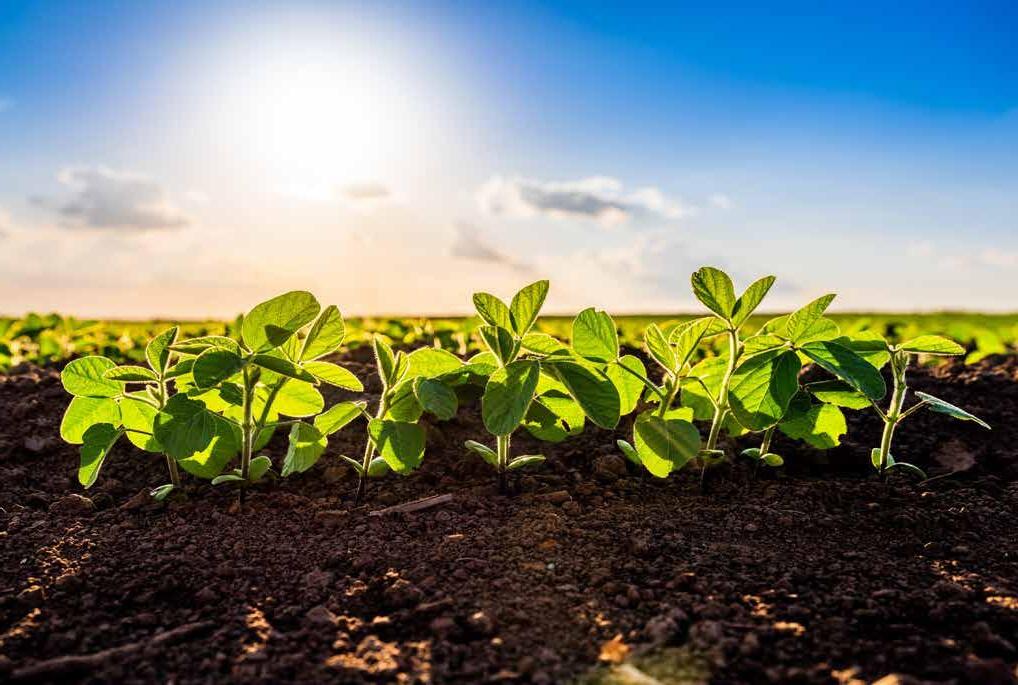




 BY TIFFANY LESTER
BY TIFFANY LESTER
If you’re pinching pennies to save money before the holidays, but still want to eat like royalty, look no further. Would you be surprised if we have beef on the menu for this issue in October? Probably not since it’s Beef Month in Alabama! Here are several budget-friendly favorites, some of which include repurposed leftovers, that even the pickiest eater will enjoy. You can find these and more at https://www. beefitswhatsfordinner.com/.
Beefed Up Mac & Cheese
Perfect for both parents and kids, this recipe uses shredded pot roast to bring mac & cheese to the next level.
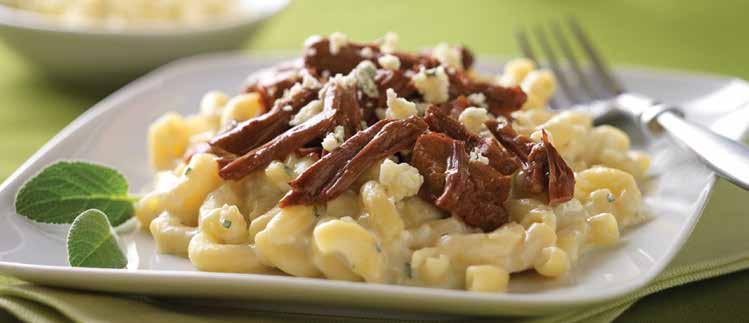
1 package (about 17 ounces) refrigerated fullycooked boneless pot roast with gravy or au jus 1-1/2 cups uncooked elbow macaroni
2 tablespoons olive oil
2 tablespoons flour
2-1/4 cups skim milk
1 cup shredded Monterey Jack cheese
1/4 teaspoon salt
1/4 teaspoon pepper
3/4 cup Gorgonzola cheese, divided

1 tablespoon chopped fresh sage
Prepare pasta according to package directions; drain. Set aside. Prepare beef pot roast according to package directions. Remove beef from gravy or au jus; reserve gravy for another use. Shred beef with 2 forks. Keep warm; set aside.
Meanwhile, heat oil in large nonstick skillet over medium heat until hot. Carefully whisk in flour; cook 3 to 5 minutes or until lightly browned, whisking constantly. Whisk in milk; cook 8 to 10 minutes or until thick, whisking constantly. Remove pan from heat
and stir in Monterey Jack cheese, salt and pepper, stirring until cheese is melted. Stir in pasta, 1/2 cup Gorgonzola cheese and sage.
Evenly divide pasta mixture among four plates; top with beef and sprinkle with remaining Gorgonzola cheese. Serve immediately.
Cheesy Beef Artichoke Dip
Use leftover beef pot roast to take this classic cheesy artichoke dip recipe to the next level.

12 ounces cooked (leftover) beef pot roast, chopped
1 (12oz) can artichoke hearts, drained
8 ounces cream cheese, softened
1 teaspoon freshly ground black pepper
2 teaspoons granulated garlic
3/4 cup reduced-fat dairy sour cream
1/2 cup shredded Parmesan cheese
1 cup reduced-fat mozzarella cheese
5 ounces fresh spinach, chopped
Serving Suggestion:
Celery sticks, carrot sticks, pepper slices, tortilla chips, crackers
Preheat oven to 375°F. In a large bowl mix together cream cheese, sour cream, Parmesan cheese, mozzarella cheese, pepper, and garlic. Once smooth add in spinach, chopped beef, and artichoke hearts; combine. Coat a 9 X 9 baking dish with non-stick spray. Place mixture into baking dish and bake for 20 to 30 minutes or until mixture is bubbling and golden brown. Serve warm alongside fresh vegetables and tortilla chips.
Grilled Steak and Vegetable Salad
Take salad over the top with delicious and tender strip steak bites.
2 beef strip steaks boneless, cut 3/4 inch thick (about 8 ounces each)
1 medium sweet potato, cut into 1/2-inch thick slices
3 different vegetables such as zucchini, yellow squash, asparagus, eggplant, red onion, red and yellow bell pepper or Romaine lettuce, cut lengthwise into quarters
1/2 cup reduced-fat dressing or vinaigrette, such as Italian, noncreamy Caesar or red wine vinegar, divided
2 cloves garlic, minced
1/4 teaspoon pepper
Toss potato and vegetables with 1/4 cup dressing; set aside. Rub beef steaks with garlic and pepper.

Place steaks on grid over medium, ash-covered coals. Arrange vegetables around steaks. Grill steaks, covered, 7 to 10 minutes (over medium heat on preheated gas grill time remains the same) for medium rare (145°F) to medium (160°F) doneness, turning occasionally. Grill lettuce and asparagus 2 to 4 minutes; grill other vegetables 11 to 15 minutes or until crisp-tender, turning occasionally.
Carve steaks and vegetables into bite-sized pieces. Combine beef, vegetables and remaining 1/4 cup dressing in large bowl; toss to coat. Season with salt and pepper, as desired.
October / November 2023 79
Roast Beef Cheddar Pockets

Flavorful beef pot roast and sharp cheddar cheese are stuffed in dough and baked to perfection.
3 cups shredded beef pot roast (about 24 ounces)
16 ounces whole wheat or regular refrigerated pizza dough
2 cups shredded cheddar cheese, divided
2/3 cup diced sweet onion, optional
1 egg white, lightly beaten
1/2 cup light dairy sour cream
Garnish: Chopped chives (optional)
Preheat oven to 375°F. On a lightly floured surface, roll dough into 12 by 19-inch rectangle. Cut into 8 rectangles, 4 by 5-1/2 inches each.
Combine beef, 1-1/2 cups cheese and onion, if desired, in large bowl; mix well. Divide beef mixture into eighths; press mixture to compact and place lengthwise in center of rectangles. Fold long sides of each rectangle over filling, pressing to seal. Place on ungreased shallow-rimmed baking sheet. Brush with egg white. Sprinkle with remaining 1/2 cup cheese. Cut small slit in top of each pocket to vent.
Bake in 375°F oven 13 to 16 minutes or until golden brown. Serve with sour cream. Garnish with chives, if desired.
Foil Packet Beef and Vegetable Meal
Build a packet with shredded beef, beef sausage and vegetables and cook on the grill. Super easy and fun for the whole family. And … no clean up.

6 ounces refrigerated fully cooked beef pot roast, shredded or fully cooked steak, cubed
6 ounces prepared smoked beef sausage
1 cup butternut squash, diced
1 cup zucchini or yellow squash, sliced into 3/4 inch pieces and halved
2 ears sweet corn, cut in half
4 teaspoons vegetable oil
2 teaspoons all-purpose seasoning blend, such as Old Bay
Combine beef and vegetables in large bowl. Add oil and seasoning; toss to coat.
Preheat grill to medium heat (approximately 350°F).
Place a 12" x 12" square of heavy-duty aluminum foil down on work surface. Add 1/4 of beef and vegetable mixture to center of foil. Fold right and left edges in and roll together to close. Fold top and bot-
80 Cooperative Farming News
tom edges in and roll to close package. Repeat with remaining mixture for a total of 4 packets.
Grill for 10 to 12 minutes until vegetables are tender. Cook's Tip: Packets can also be prepared in a 350°F oven. Bake for 10 to 12 minutes.

Easy Caramel Apple Cinnamon Rolls
These mouthwatering rolls don’t have beef in them (thank God), but I just had to share for our readers living with a sweet tooth. They’re great for breakfast or dessert. By using a pre-made dough and apple pie filling, they’ll be ready in no time!

1 package of refrigerated cinnamon rolls (I stick to Pillsbury cinnamon rolls if in stock.)
¼ cup apple pie filling, diced 3 tablespoons caramel sauce

Preheat oven according to directions on packaged cinnamon rolls. Lightly spray a 9-inch round pan with non-stick cooking spray.

Place each cinnamon roll in pan. Make an indent in the middle of each roll with the back of a spoon. Place about 1-2 tablespoons apple pie filling into the middle of each roll. Drizzle rolls with caramel sauce.
Place into the oven and bake according to package directions. Remove from oven and drizzle with additional caramel sauce, if desired.
Serve immediately.
Did you try one of these recipes? Snap a picture and share it on social media! Tag us and use the hashtag #CoopPantry!

October / November 2023 81
HAMBURGERS AND HAYRIDES
October 4, 2023
Huntsville - Huntsville Botanical
Gardens - Admission
11:00 a.m. - 1:00 p.m.
Call 256-830-4447
ALABAMA COASTAL

BIRDFEST 2023
October 4-7, 2023
Spanish Fort - South Alabama
Land Trust - Admission
Various times - Various Locations
Call 251-625-0814
RAPTOR SHOW
October 5, 2023
Huntsville - Huntsville Botanical
Gardens - Admission
11:00 a.m. - Noon and
1:00 p.m. - 2:00 p.m.
Call 256-830-4447
MONSTER MASH - HALLOWEEN MURDER MYSTERY DINNER SHOW
October 5, 2023
Foley - OWA - Admission
6:30 p.m. - 9:00 p.m.
Call 251-237-3330
2023 MARBLE VALLEY VFD OPEN HOUSE & YARD SALE
October 5-7, 2023
Sylacauga - Marble Valley Road
7:00 a.m. - 4:00 p.m.
Call 251-625-0814
TENNESSEE VALLEY OLD TIME FIDDLERS CONVENTION
October 5-7, 2023
Athens - Athens State University
Friday: 6:00 p.m.
Saturday: 7:30 p.m.
Call 256-233-8183
LIVING HISTORY CREW DRILL
October 7, 2023
Mobile - USS ALABAMA
Admission
8:00 a.m. - 3:00 p.m.
Call 251-433-2703
10TH ANNUAL DADEVILLE
FALL FESTIVAL
October 7, 2023
Dadeville - 178 Tallassee Street
9:00 a.m. - 3:00 p.m.
Call 256-825-4019
OKTOBERFEST
October 7, 2023
Foley - OWA
Various Times
Call 251-923-2111
ST. FLORIAN OKTOBERFEST
October 6-7, 2023
St. Florian - 83 St. Florian Road
All Day Event
Call 256-767-3690
59TH ANNUAL OCTOBER
BOAZ HARVEST FESTIVAL
October 6-7, 2023
Boaz - Downtown
8:00 a.m. - 8:00 p.m. Call 256-593-8154
AMATEUR PUMPKIN CARVING CONTEST
October 7, 2023
Huntsville - Huntsville Botanical Gardens - Admission
2:00 - 5:00 p.m.
Call 256-830-4447
2023 BARBER VINTAGE FESTIVAL
October 6-8, 2023
Birmingham - Barber Motorsports Park - Admission
Various Times Call 205-298-9040
FAMILY CAMPOUT IN THE GARDEN
October 13-14, 2023
Huntsville - Huntsville Botanical Garden - Admission
5:00 p.m. - 8:00 a.m. Call 256-830-4447
HEADLAND HARVEST DAY FESTIVAL
October 13-14, 2023
Headland - Town Square
All Day Event Call 334-693-3303
SPIRIT OF HODGES
October 13-14, 2023
Hodges - Sunset Road
Friday: 7:00 - 10:00 p.m.
Saturday: Noon - 7:00 p.m. Call 205-935-3445
PIONEER DAYS
October 13-14, 2023
Troy - Pioneer Museum of Alabama
10:00 a.m. - 4:00 p.m. - Admission Call 334-566-3597
SHOALS DRAGON BOAT FESTIVAL
October 13-15, 2023
Florence - McFarland Park
Admission - 8:00 a.m. - 5:00 p.m. Call 256-764-4661
HOWL-O-WEEN COSTUME CONTEST
October 14, 2023
Foley - OWA Island Call 251-923-2111
52ND KENTUCK FESTIVAL OF THE ARTS
October 14-15, 2023
82 Cooperative Farming News
Northport - Kentuck Park
Admission
Saturday: 9:00 a.m. - 5:00 p.m.
Sunday: 9:00 a.m. - 4:00 p.m.
Call 205-758-1257
FALL PLEIN AIR ART EVENT
October 15, 2023
Huntsville - Huntsville Botanical
Gardens - Admission
9:00 a.m. - 5:00 p.m.
Call 256-830-4447
2023 ABT TOURNAMENT
SERIES CHAMPIONSHIP
October 20-21, 2023
Leesburg - Riverside Street
Launch will be at safe daylight
Weigh-in times vary
Call 256-526-8890
SPRUCE PINE DAY
October 21, 2023
Spruce Pine - 9312 County Road 22
8:00 a.m. - 6:00 p.m.
Call 256-577-2047
BOLL WEEVIL FALL FESTIVAL
October 21, 2023
Enterprise - Main Street
11:00 a.m. - 4:00 p.m.
Rain date - October 28th
Call 334-347-0581
27TH ANNUAL APPRECIATION DAY FESTIVAL
October 25, 2023
Pine Apple - Historic Downtown
9:00 a.m. - 3:00 p.m.
Call 256-830-4447
FOLEY’S HOMETOWN HALLOWEEN
October 26, 2023
Foley - North McKenzie Street
5:30 - 8:00 p.m.
Call 251-943-1300
FALL ON MAIN STREET FESTIVAL
October 28, 2023
Roanoke - Main Street
8:00 a.m. - 5:00 p.m.
Call 334-863-6612
ELBERTA GERMAN
SAUSAGE FESTIVAL
October 28, 2023
Elberta - Elberta Town Park
8:00 a.m. - 5:00 p.m.
Call 251-986-3615
FALL FAMILY FESTIVAL
October 28, 2023
Alexander City - Russell Crossroads
10:00 a.m. - 1:00 p.m.
Call 256-397-1019
TASTE OF MONROEVILLE
November 2, 2023
Monroeville - Monroeville Community
House - Admission
6:00 - 9:00 p.m.
Call 251-743-2879
BET YOUR LIFE - CASINO MURDER MYSTERY DINNER SHOW
November 2, 2023
Foley - OWA - Admission
6:30 p.m. - 9:00 p.m.
Call 251-237-3330
2023 NATIONAL PEANUT FESTIVAL
November 3-12, 2023
Dothan - Admission
Visit nationalpeanutfestival.com for more information and schedule of events
Call 334-793-4323
TOYS FOR TOTS
MOTORCYCLE RIDE
November 4, 2023
Mobile - Battleship Memorial Park
Admission - 9:00 a.m. registration
Kickstands up at 11:00 a.m.
Call 251-433-2703
CANINES, CAMELS, CATS, AND CRITTERS WAGON TOUR
November 4, 2023
Orrville - Old Cahawba
Archaeological Park
Admission - Various times
Call 334-872-8058
BATTLESHIP RUGBY FALL
INVITATIONAL RUGBY
TOURNAMENT
November 4-5, 2023
Mobile - Battleship Memorial Park
Admission - 8:00 a.m. - 5:00 p.m.
Call 251-433-2703
18TH ANNUAL MOSS
ROCK FESTIVAL
November 4-5, 2023
Hoover - Hoover Metropolitan Complex - Admission
Saturday: 10:00 a.m. - 5:00 p.m.
Sunday: 10:00 a.m. - 4:00 p.m.
Call 205-595-6306
2023 ROUND TOP FOLK FESTIVAL
November 4-5, 2023
Huntsville - Burritt on the Mountain
Saturday: 10:00 a.m. - 4:00 p.m.
Sunday: Noon - 4:00 p.m.
Call 256-536-2882
THE WETUMPKA WILDLIFE
ARTS FESTIVAL
November 11, 2023
Wetumpka - Various Locations
Various Times
Call 334-478-3366
MONROEVILLE MARKET
November 11, 2023
Monroeville - Downtown
10:00 a.m. - 3:00 p.m.
Call 251-743-2879
MORRIS BLUE SPOON CHILI FEST
November 18, 2023
Morris - Morris Town Park
Admission - 11:00 a.m. - 5:00 p.m.
Call 205-332-2641
CHRISTMAS AT THE CROSSROADS
November 24, 2023
Alexander City - Russell Crossroads
9:00 a.m. - 3:00 p.m.
Call 256-397-1019
October / November 2023 83 “What’s Happening in Alabama” Policy The AFC Cooperative Farming News publishes event listings as space allows, giving preference to agricultural events of regional or statewide interest and those that are annual or one-time events. The magazine assumes no responsibility for the accuracy of information submitted for publication and advises calling ahead to confirm dates, locations, times and possible admission fees.
event,
be
town and physical location),
information,
website.*
Listings must be received at least two months in advance and will be accepted up to a year in advance.*
To be included in the calendar, send listings to: Cooperative Farming News Calendar of Events P.O. Box 2227 Decatur, AL 35609 -oremail to Calendar of Events at advertising@alafarm.com *Please include name of
where it will
held (both
a phone number for more
and an email or
*Event













































 KAREN E. DAVISON, PH.D.
KAREN E. DAVISON, PH.D.






























 BY SAVANNAH NOWELL
BY SAVANNAH NOWELL





































 BY JESSIE SHOOK
BY JESSIE SHOOK







 Cuzz’s Travel Depot offers a little bit of everything you need to refill and refresh. A wide selection of grocery items are available.
Cuzz’s Travel Depot offers a little bit of everything you need to refill and refresh. A wide selection of grocery items are available.


















 Move houseplants indoors before frost threatens.
Fresh spinach is a winter treat.
Move houseplants indoors before frost threatens.
Fresh spinach is a winter treat.










 BY BETHANY O’REAR
BY BETHANY O’REAR























 BY ANGELA TREADAWAY
BY ANGELA TREADAWAY












 BY TIFFANY LESTER
BY TIFFANY LESTER






















